
Bhavesh Parekh
Houston - Texas
You have no groups that fit your search
Bhavesh Parekh
2 years ago
Post from Bhavesh Parekh
How to Convert an Android App to iOS?

Well, the need to convert Android applications to iOS App is felt by many business owners to sustain in the market. The reasons are many and let us have a look at some of them
Reasons To convert Android Application To iOS
Well, you have all the reasons to convert the android app to iOS to cement your position in the market and also be part of the success worldwide.
Profitable Market And High Demand
Whether you want to convert Android to iOS, you need to assess your audience. Yes, it means if 90% of your audience is on Android as well as iOS then it is worth investing money on both platforms. It means if you can see a strong market on the app store for the app you are planning for then it is worth giving a thought.
More Opportunities For An Increased Customer Base
Once you launch your app on a different platform, you are opening doors for more opportunities and customers. If you are solely dependent on either of the two platforms - Android or iOS, you are still missing the group of users who are using another platform.
So, if you are planning to convert android applications to iOS, do not eliminate Android OS as iOS and Android together will offer more profits for your business.
Explore New Markets
In case you want to hit new markets, having apps on major OS platforms would be a sensible decision. If you are thinking of expanding beyond just the USA to other countries like Asia, Africa, and Europe, then the android app would give you the boost. Similarly, if you want to hit the markets in Oceania, North America, Japan, Saudi Arabia, etc the iOS app development is the crucial platform you need to expand your business.
Two Apps Work Better Than One
With 2 apps you can generate better revenues as you offer two distinct channels to your target audience. Hence the idea of converting the android application to iOS app while keeping the android app accessible to the users can help gain profits.
Edge Over Competitors
When it comes to selecting the right platform, your competitors may go with just a single platform. So, developing an app for both iOS and Androids can help you give a competitive edge and create your identity in the market.
Data Available In Abundance For Analysis
Data & analytics are an integral part of successful apps. With sufficient data available it becomes easy to analyze the behavior of the users and know the demands of the market.
Factors To Be Considered Before Converting an Android Application to iOS
Before you plan to convert android to iOS you need to follow some basic measures for error-free and seamless conversion of Android applications to iOS
Choose A Programming Language

When it comes to programming language for android app development, Kotlin proves to be the fastest, simplest and seamless language.
Well, many people think that they just need to translate existing code to convert the Android application to iOS. This is not true. Programming languages also come with their set of algorithms, rules, syntax, and semantics. The programming languages used for both iOS and Android OS are different.
For Android OS Kotlin & Java are the programming languages used for development and for iOS (Apple products) Swift & Objective-C are used.
Organize The OS Versions
Unlike a range of Android operating systems, iPhone devices running on a single iOS that update with each new release of iPhone. It means once a new version is launched, all the devices compatible with that version are updated at the same time.
So, choose the last version of iOS to convert to manage the potential users.
How To convert Android Application To iOS App
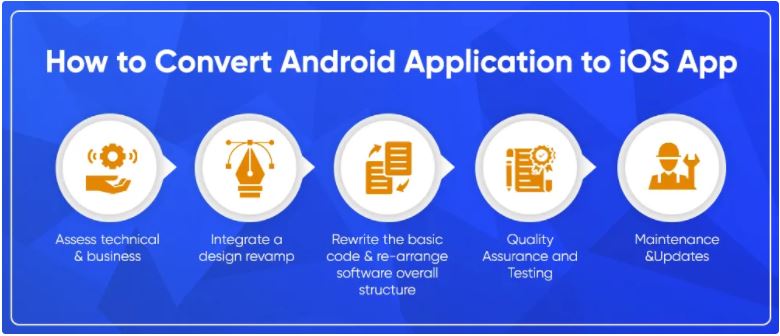
Step 1
Assess Technical & Business Requirements
You need to perform an in-depth analysis of your business needs and to know the compatibility details of the iOS platform along with 3rd party modules & libraries.
You need to analyze
- Functional details
- App designs details
- Business logic modules
- source code variation
Step 2
Integrate a Design Revamp
Some major elements of Android applications need to be revamped and modified as per the flat design standards. The Flat design revamp includes creating 3D-esque, visuals, etc
Step 3
Rewrite the Basic Code and Re-arrange Software Overall Structure
Certainly, Android app code cannot be used to match the iOS architecture and hence you need to write the entire code. The process of code Converting is all about revising and executing step by step to ensure seamless workflow.
Step 4
Quality Assurance and Testing
The above two stages are the most crucial ones to be considered when you convert android to iOS as you need to test the UI/UX functionality of the application. Also, QA helps ensure the quality and smooth functioning of the app.
Step 5
Maintenance & Updates
The end product will be an Android to iOS app conversion process that needs to patch up errors if any when the software goes live. Also, it is important to initiate timely product updates.
So, if you are planning to convert an Android app to iOS, X-Byte Enterprise Solutions offer a convenient transition with the help of its dedicated team of mobile app developers.
Conclusion
Converting Android applications to iOS is a detailed process that requires all necessary efforts to manage software improvement, modification, and optimization to match market needs. The process is complex but pays you back in the long run. You would be able to hit new markets and target potential audiences.
| Read Original Blog Here : Convert Android App to iOS App
0 likes · 0 comments
Bhavesh Parekh
2 years ago
Post from Bhavesh Parekh
Online Marketplace App Development Guide Before You Startup
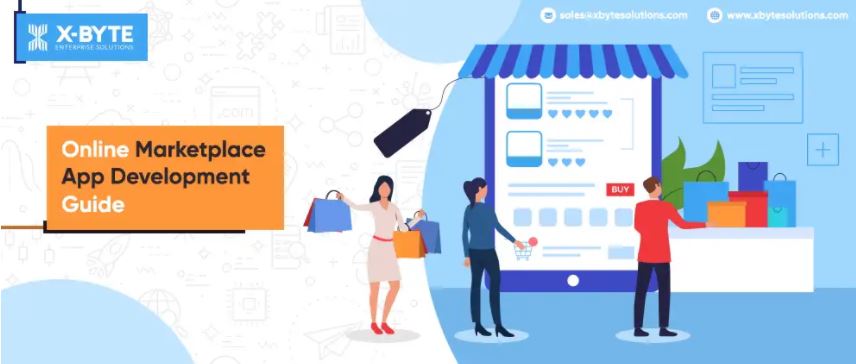
Marketplaces are no longer synonymous with the crowded avenues on weekend mornings. People don’t flock to a commonplace anymore. Nor do they wait in line to purchase their preferred products and services on deals. With online marketplace app development everyday is either a sale or a festive occasion with people buying things they needed, didn’t need, felt impulsive to buy and more.
From hand picking farm-fresh vegetables and groceries to manually trying out apparel and clothing accessories, we have come to getting them delivered at doorsteps and trying them on virtually through AR and VR technologies. Online marketplaces are the current rage and their prominence has increased further after the onset of the global pandemic.
While every other industry either shut down or struggled to cope up with its operations and crumbling economic conditions, the only industry that not just survived but soared during the pandemic was eCommerce and its allied segments like marketplaces, on-demand business services and more.
People preferred to stay away from any and all forms of human contact and decided to shop online. Even the boomer generation that was staunchly against online shopping and other forms of non-conventional mediums got a taste of marketplaces and their convenience. This pushed several businesses out there to bring in digital transformation into their operations and prefer marketplace app development to attract new customers from beyond their geographical locations.
So, if you’re someone who is eyeing marketplace mobile app development for your venture, this exclusive guide is just for you. We break down all essential details you need to know about marketplace development including what it is, its advantages, setting up an online marketplace and more.
Let’s get started.
What Is A Marketplace?
Visualize a commercial complex in your neighborhood that has multiple shops across diverse genres, products and services. When you visit these complexes, you are free to go to any shop and purchase your preferred products. The same applies to malls and shopping avenues as well.
Now, imagine the same mall on the internet. What you will see is a marketplace - an online platform that offers products, brands and services for you to choose from. There are shops from different vendors and brands and you have amazing options to choose from.
Furthermore, these brands are also competing with their deals and discounts to get you to purchase from their shops. This is exactly what a marketplace is all about.
To access these marketplaces, you either use a website or an app. The latter is gaining more popularity these days.
Key Statistics
Before we further understand marketplace development, let’s look at some key statistics to get to know the market conditions better.
- eCommerce sales topped over $4tn in the year 2020.
- Amazon’s profits grew by around 80% in the same time.
- Over 3.4bn people across the world purchase products and services from the eCommerce sector.
- eBay has over #ebay-statistics-to-make-any-sellers-head-turn">1bn active listings on its platform.
- On an average day, over 2 billion transactions happen on eBay.
Types Of Marketplaces
Before you venture into marketplace development, you should understand that there are different types of marketplaces. From the outlook, they all look the same but when you dig deeper, you realize the subtle differences they showcase. Let’s look at what the types of marketplaces are.
B2C
B2C stands for Business To Clients and these are marketplaces setup by marketplayers to cater to the needs of consumers. For instance, consider Amazon, Walmart, TaskRabbit (service) and more. Marketplace development strategies for the B2C domain are unique.
B2B
Abbreviated as Business To Businesses, these cater to other businesses. These could be wholesale units that supply to local vendors, who ultimately sell to consumers. They could also be industrial units that distribute products and goods to multiple vendors across the globe. B2B marketplace development requires a niche approach and a different type of marketing and targeting technique. Alibaba B2B is the best example for this sector.
P2P
Peer To Peer is the full form of P2P and the aim of this marketplace is to connect sellers with buyers. While it does sound similar to B2C, the major difference here is that sellers and buyers are both individuals.
For instance, if an individual from Colorado decides to sell their Lego collection, an interested buyer would contact them through the P2P platform from California and place an order. Packaging, shipping and fulfillment are all done by individuals in this segment. eBay is the most ideal example of P2P marketplaces.
Why Can’t I Open An Online Store Instead Of Getting Into Marketplace App Development?
While online stores and marketplaces are both concepts of the eCommerce spectrum, one has a significant edge over the other. At this point, pay attention to the term ‘edge’ here because both are unique, beneficial and super-convenient at the same time.
However, online marketplaces have an edge over their online store counterparts that will prove to be profitable for those who prefer online marketplace app development.
To help you get a clear idea of what this edge is about, here’s a quick tabular comparison.
Your Guide To Marketplace App Development
Marketplace app development isn’t simple. Right from ideation and designing an effective platform to ensuring orders are fulfilled on time, all modules, processes and systems should fall in place and work in tandem with each other. For those of you who are just starting out, these quick tips on marketplace app development and marketplace website development will help you get an idea of the complete picture.
Decide On Your Market Segment
One of the first steps in marketplace development is to decide on your market segment. Like we saw, there are three types of marketplaces - B2B, B2C and P2P. Based on your domain expertise, interests, experiences and team available, you should decide the segment you are about to venture into.
This will help you decide the type of website or app you will eventually build, the networking you should do, the associated marketing and promotional strategies, business models and more.
The Core Features
Regardless of whether you prioritize marketplace mobile app development or a website, there are some core features that you need to incorporate into your marketplace platform.
- Your platform should have three essential panels - admin, customer and seller.
- Admin panel is the backbone of your platform’s operations and is the bridge between buyers and sellers. Admins manage website operations, add/remove sellers and buyers, maintain products and inventory, optimize supply chain and do more.
- A Customer panel is the client-facing module that allows people to create accounts, shop for their products and services, checkout seamlessly, compare prices, get personalized recommendations and more.
- The seller panel, on the other hand, has all the details about individual sellers, their products and inventory, bank and transaction details, product catalogs, product images, fulfillment methods and more.
- Besides these panels, your marketplace development checklist should include tech concepts like artificial intelligence and machine learning for personalization, recommendation engines, analytics and more.
- Voice search is increasingly becoming inevitable and people today are buying products through their virtual assistants and devices. So, optimize your platform for voice search and dictation.
- Have in-app messaging systems to let buyers interact directly with buyers and get their questions answered.
The UI And UX
Marketplaces are convenient platforms by default. However, not all platforms manage to deliver convenience to their customers. One of the major aspects they fumble is on developing a good UI for their visitors. A lot of businesses have an amazing line up of products, deals and discounts, fulfilment strategies and more but end up making no sales because of their faulty UI and UX.
To avoid such instances, keep your website as minimal and smooth as possible. Don’t clutter and overwhelm your visitors with information. One of the first things you should let them do is search for their preferred products and services.
Most visitors are on your platform for a specific reason and your platform should let them accomplish their task first. Upselling and product recommendations should only follow and not be number-one priorities.
So, develop an appropriate prototype and wireframe that lets your visitors navigate freely and shop like they would on a physical complex. Develop an MVP if you have to and test it out. Validate results and keep optimizing your online marketplace development plan for visitor retention and satisfaction.
Selecting The Ideal Business Model
Like we mentioned, there are more than two ways to monetize your marketplace. Let’s explore what they are.
Commissions Model
This is the most popular marketplace business model, where platform owners take a cut as commission for every product or service sold on their portal.
Premium Listings
If you’ve used a marketplace, you would know that search results are mixed bags of products from multiple brands. To help businesses get traction, you could introduce a premium listings option, where brands can pay to stay on top of search results. So, when visitors look at search results, they would automatically click on the first search result and shop from the brand.
Sponsored Promotions
Besides just listing brands and businesses, you could also offer real estate on your portal to interested brands. You could let them run a full-fledged advertisement such as a banner ad, a video or something more interactive on your platform for a cost.
Brand Collaborations
This is an interesting way to generate more revenue for your marketplace. You could network and collaborate with local brands and businesses to have them as partners or exclusive vendors of their products. So, when visitors are looking for their products online, they would find it only on your marketplace. Such collaborations offer benefits for both the parties involved.
The Development Team
Marketplace app development is more complex than your mobile app development process. There are more modules to implement and more features to incorporate. Besides, your marketplace should be built to be stable at all times and manage heavy traffic during sale days as well. That’s why you should assemble the dream team for your marketplace development.
The right team will know the tech stack to implement, the programming language to use and the right databases to deploy.
Wrapping Up
So, this is the extensive guide on marketplace development. We believe you now have a better idea of what the entire concept is all about. If you’re at the verge of starting your own marketplace, we recommend you reach out to us.
We are pioneers in marketplace app development and we will deliver the most impeccable and innovative solution your idea and ambition deserve. We have the best minds working in our development teams.
Reach out to us and let’s get the process started.
| Read Original Blog Here : Online Marketplace App Development
0 likes · 0 comments
Bhavesh Parekh
2 years ago
Post from Bhavesh Parekh
How To Convert Android or iOS App Into React Native?
React Native is the most preferred language of developers. Undoubtedly, a lot of developers use JavaScript, but expert developers use its elements to accelerate development speed. Still, people prefer apps developed using native programming languages as they are powerful. Similarly, converting an iOS app or native Android Application to React-Native can help you get the app developed faster.
What is React Native?
Well, React Native is utilized to build native applications. React Native developers use native Android & iOS features to build mobile UIs having declarative components in place of web components. React Native works just like React. The only difference is that in place of Virtual DOM, it utilizes native views to manage DOM.
Why use React Native?
In case you already possess a native Android app, it is easy to convert a Native Android Application to React-Native module without building a React Native app.
React Native apps offer a perfect solution in many cases. You can convert an Android or IOS app to React-Native to save a lot of time.
How To Transform Android or iOS App in React Native?
It is a simple process that helps you convert iOS orNative Android Application to React-Native
Let us have a look at the steps that help convert Android or IOS application to React-Native
Configure Maven
Maven needs to be configured and for that, you need to add React Native & Javascript elements to the library build.gradle file.
Make sure you include an entry for JavaScript maven directories & React Native to ‘allprojects’. Remember, double-check the final path at this stage itself.
Activate native modules auto-linking
To initiate auto-linking, you have to create an entry to - settings.gradle. After this add that entry to - app/build.gradle.
Configure the permissions
Check if you have Internet permission. It can be checked in - AndroidManifest.xml. In case the user flow demands you can access - DevSettingActivity, and add this activity to - AndroidManifest.xml.
ClearText Traffic
In case the Android version you are using is higher than 9, you will find cleartext traffic to be disabled.
It will stop your application from linking to Metro builder. You can use the code – “userCleartextTraffic” to “AndroidManifest.xml” to enable the connection
Integration Of Code
The process of integrating code needs the developer to follow the steps given below:
- Create an index.js file.
- Include React Native code
- Ask permission for development error overlay
- RenderRender JS component
As a default process dev menu will be enabled except in emulators. Here, you need to use ctrl + M to implement JavaScript code for testing.
Testing
At this stage, we need to test the conversion to make sure that the React Native app is operating as expected. You can use Metro builder to build - index.bundle.
Benefits Of Using A React Native For Your Native Android And iOS App
Everyone needs a scalable, functional, and user-friendly app to beat the sharp competition. Hence, cross-platform app development is trending to meet the needs of app development.
React Native is the ideal framework for conversion of Android or IOS apps as it offers a secure and efficient app. Also, the app development process can be performed. The benefits of React Native that you will get after the conversion are
Higher Performance
When it comes to the performance of React Native, it makes use of distinct threads via Native applications and UI. React Native gets connected to the OS easily and generates the code required for native API.
Reusability Of Components
Reusability is among the vital features of React Native which helps developers convert IOS app to React-Nativeas it reduces the time take for overall development for the developers. It is because the developers just need to replicate the components.
Interestingly, all the execution of the Native framework can be performed by just reusing the codes irrespective of the OS
Live Reloading
React Native owns 2 main features
- Live reloading
- Hot reloading
These features allow you to check the outcome by simply running the code and reduce the wait times needed for alterations before making the app live.
Excellent Community Support
As React Native is an open-source framework, the developers find it easy to work with. With their experience, they also share tips and tricks in the community to help others find solutions to their queries. It offers excellent community support for others to learn more about React native and execute practically.
In case you cannot spare time to interview or research the best software development company to convert your existing Android or iOS application to React Native, then X-Byte Enterprise solution can assist you to get a fully functional Reactive Native app after conversion. Connect with us to share your requirements.
Conclusion
React Native is one of the popular frameworks that saves time and costs. Hence, it is the ideal framework that delivers high-performing and robust apps.
It means with the conversions you would be able to get an app that is faster, robust, and efficient. If you think the conversion of iOS Native Android Application to React-Nativeis quite technical for you or you don’t have enough time to carry out this conversion, you can seek help from dedicated mobile app developers. You can also get faster market times with a dedicated mobile app development team. Also, you don’t need to hire a separate QA team to test the app, if you collaborate with the software development team.
| Read Original Blog Here : Convert Native Android iOS App into React Native App
0 likes · 0 comments
Bhavesh Parekh
2 years ago
Post from Bhavesh Parekh
The Important Swift Design Patterns For iOS App Development
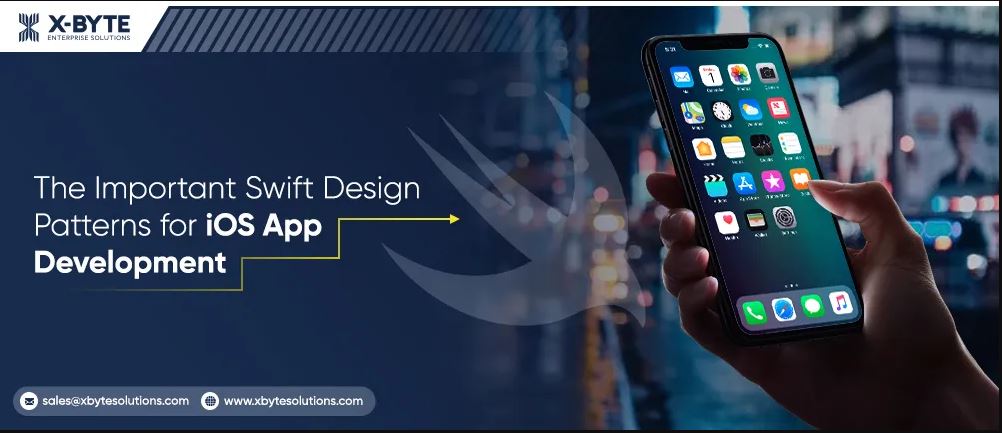
One of the main things to be considered while using Swift is to decide the design patterns for ios app development and implement them correctly.
Swift is a new language and thus a lot of developers are not aware of the right way to use it. It is important to use precise design patterns and build stable and high-quality apps.
Let us learn about the common Swift design patterns to make the right decisions.
What are Design Patterns?
Designed patterns can be explained as a solution to a particular issue faced while designing the structure of an app. Remember the design patterns are not a set of codes to be integrated into an app. They are the ideas that explain how issues can be resolved. It is a template that shows you how code can be written to resolve the issue.
Benefits Of Design Patterns
Tested Solutions
Here you don’t need to spend time in trial and error to find the solution to a specific software development issue. This is because design patterns offer the perfect solution for the problem and tell you how to execute it.
Code Unification
You can get ideal solutions with design patterns. These solutions have already been tested for bugs and cons. It helps you avoid a lot of mistakes while designing the structure of an app.
Common Vocabulary
For any software problem, you don’t need to explain in detail how to resolve it, you can just tell the developers the design pattern you utilized and they will understand the solutions you integrated.
After knowing about what design pattern is and their benefits let us know about
Types Of Swift iOS Design Patterns
Creational
They are associated with object creation techniques. It is one of the iOS Swift design patterns that offer a precise indication to portray objects to be used in a particular situation. The main creational design pattern techniques are
- Factory
- Abstract
- Builder
- Singleton
- Prototype
Structural
This type of Swift mobile app development pattern allows simplifying the design by determining the easiest method of incorporating connection between classes and objects. The most common structural design patterns are
- Bridge
- Façade
- Composite
- Adapter
- Proxy
Behavioral
These design patterns exhibit major common communication patterns existing between entities. Some of the popular behavioral design patterns are
- Chain of Responsibility
- Template Method
- Command
- Iterator
Top Swift iOS design patterns used by developers
Builder
It is a creational design pattern that helps developers to create complex objects from simple objects.
When The Design Pattern Can Be Used
- To build complicated objects
- Need different views of a specific object
- Wish not to use telescopic constructor because of its complex code
Adapter
It is a structural design pattern that helps two or more objects connect with an unsuitable interface to work flawlessly. This design pattern converts the interface of a particular object to help the object adapt to a distinct object.
When The Design Pattern Can Be Used
- Wish to include 3rd party object in the app but the interface doesn’t go with the remaining code
- While using multiple subclasses in a single app or cannot increase the superclass
Decorator
It is a structural design pattern that allows adding features of the existing objects by masking them in useful coverings. The design helps to wrap objects hence known as the Wrapper design pattern.
The pattern can be used to wrap two or more objects together provided the objects own a similar interface
When The Design Pattern Can Be Used
- It is not possible to include new features to the object via inheritance
- Wish to include features to the objects while hiding them from the code
Façade
It is yet another structural design pattern that provides a simple interface to a library, a set of classes, or a framework. With this, you don’t need to display multiple methods with multiple interfaces.
Façade allows you to build your class & wrap different objects in to make the code and interface easy to use for the users.
When The Design Pattern Can Be Used
- To provide a unified and straightforward interface to a complex subsystem
- Need to break up a subsystem into multiple layers
Template Method
It is among behavioral Swift design patterns which are used to define a framework for the algorithm and assign responsibility to all the subclasses. It gives the flexibility to subclasses to re-assess some steps present in forcing any modifications in the entire structure.
When The Design Pattern Can Be Used
- Need subclasses to widen a simple algorithm within changing the structure
- Need different classes accountable for the same actions
The above Swift design patterns are few to name as there are some other iOS Swift design patterns used by iOS developers across the world.
Wrap Up
The above Swift design patterns are the top 5 patterns used widely for mobile app development. It is important to choose the right pattern while building a secure and functional app. The above design patterns offer an app that is easy to upgrade and maintain. Hence using these patterns in your app will help you simplify the app development process and offer amazing code quality.
If you are not confident about what Swift design patterns to choose from for your app, X-Byte Enterprise Solution will help you not just choose the right design pattern but will assist you with the Swift app development process to give you a secure and functional app.
| Read Original Blog Here : Top Design Patterns For iOS App Development
0 likes · 0 comments
Bhavesh Parekh
2 years ago
Post from Bhavesh Parekh
Top 12 Mobile Game Development Tools Preferred by Developers
When it comes to mobile phones, people are not just using them to order things or purchase essentials, but it has also become the mode of entertainment. When it comes to entertainment, other than movies, TV shows, videos, gaming is one of the preferred modes of entertainment that people of all ages love to engage in. Hence, a lot of gaming apps are trending with the help of mobile game development and helping gamers enjoy playing their favorite games.
This article will help you know about the top 12 mobile game development tools preferred by developers.
Mobile Game Development Tools Preferred By Most Developers
1. Unity
Unity is among the popular mobile game development tools and a cross-platform gaming tool that is used to develop 2D and 3D games.
Features
Unity tool is based on layers where distinct objects can be established helping developers handle a robust project.
Large plug, asset store, and built-in templates available
With a built-in editor, you can edit images and arrange animations via animator window, particle systems, and audio editing.
2. Corona SDK
It is one of the perfect game development tools that help in the development of 2D mobile apps for Android, iOS, Windows, etc
It is a strong framework used by developers as it helps build gaming apps with 1000 built-in PLugin, APIs, Corona SDK extensions.
Features
Corona SDK utilizes an engine - OpenGL that enables modifications in graphical qualities of the game
Comes with a Text plugin and Corona Editor
In-built monetization
500 plus custom APIs & plug-ins available
3. SpriteKit
SpriteKit is an amazing mobile game development tool available on OS X, iOS and is an excellent framework for 2D game development which supports both Objective-C and Swift.
Features
- SpriteKit makes the development process easy for the developers
- SKView makes scene management easy
- SKAction class is useful to scale, rotate and move various game objects.
- It comes with sound & building custom codes.
- SpriteKit comes with a scene editor which facilitates designing at different levels
4. Marmalade SDK
It is also one of the effective mobile game development cross-platform tools that makes use of C++ code to develop games. The code written once can be used anywhere with the help of Marmalade SDK.
It enables releasing mobile games in various stores in less time
Features
- Enables access to graphics rendering capabilities via OpenGL API directly or through Marmalade SDK layer feature
- Open architecture.
- High performance.
- Test simulator
- Aids various capabilities of Windows, Android, and iOS
5. Amazon Lumberyard
This mobile game development tool utilizes CryEngine architecture. It is a free AAA game development engine released by Amazon. It comes with plenty of cross-platform tools and it’s deployable to many platforms to build premium games.
Features
- No need to share the profits with Amazon
- Hosting multiplayer games on AWS cloud is possible
- Integrated Twitch provides live streaming for video games
- Amazing tool for video games and marketing mobile games
6. CryEngine
It is one of the reliable mobile Game development tools which is used to develop 3D games for Windows PC and Console. You can develop 1st person shooter games using CryEngine and many other latest games with ActionScript, C++, Visual Studio, and Lua script.
Features
- Voxel-Based Global Illumination
- Motion Blur and Depth of Field
- Per-Object Shadow Maps
- Volumetric Fog Shadows
- Level Design
- Flowgraph
- Real-Time Dynamic Water Caustics
- Multi-Layer Navigation Mesh
- Parametric Skeletal Animation
- Advanced AI System, etc.
7. NextPeer
It is a multiplayer SDK that identifies the problem of multiplayer gaming on smartphones. It works on both synchronous & asynchronous gameplay.
Features
- NextPeer improves the gaming experience & player engagement
- Helps developers attain user retention.
- Offers real-time interactions as well as live rankings to portray it real and exciting
- With its delayed synchronous feature it helps users to play previous sessions of different players.
- Helps design native iOS & Android games
8. Haxe
It is an open-source, multi-platform programming language that supports both Android and iOS. It is easy to learn the language for developers
Features
- Builds cross-platform native code
- Aids faster game development
9. Gideros
It is amongst popular open-source mobile game development tools that use the Lua language.
Features
- Helps scale, move and rotate objects within the game
- Utilizes Box2D for physics & comprises other vital tools like texture packer & font creator.
- Enables prompt game testing via Wi-Fi connection on your mobile device.
10. Titanium
It is a free framework used by developers to develop apps using JavaScript.
Features
- Can modify or animate views & images with native controls from Android and iOS.
- Amazing effects can be added to the games
11. PowerVR Graphics SDK
The framework aids in building cross-platform graphics apps. It helps accelerate the entire process of writing apps
Features
- Simplifies plenty of objects in complex games.
- Provides simple and shader effects, functional shapes, etc
12. Project Anarchy
It is one of the best end-to-end game development tools that help developers to develop comprehensive games for mobile phones
Features
- It comes with a set of tools like Animation studio, Physics, and AI.
- Help includes BX files in asset manager and supports, particle lighting, Automatic script validation, and integration for Scaleform & FMOD.
Conclusion
In this article, we explored some of the trending mobile game development tools preferred by developers today. It will help you get better insights into each gaming framework and pick the one that suits your development needs.
In case you are new to mobile app development and want to build your mobile game application, get in touch with X-Byte Enterprise Solutions to get a scalable mobile gaming application.
| Read Original Blog Here : Mobile Game Development Tools
0 likes · 0 comments
Bhavesh Parekh
2 years ago
Post from Bhavesh Parekh
Web Apps Vs. Mobile Apps: Choose One Or Both?
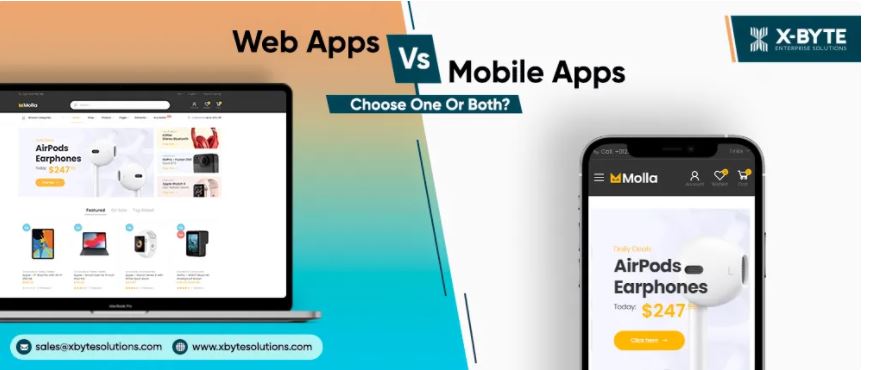
The subject of Web Apps vs Mobile App Has always been a topic of discussion. Desktops are still in demand whereas smartphone business has accelerated over the years. Mobile shopping has seen a hike for the past many years. Hence the whole world is moving towards mobile strategy.
When a desktop is still in demand and mobile shopping is increasing considerably, the debate of Web Apps vs Mobile App Is going to continue.
Understanding whether you should opt for Web Apps or Mobile App Development or both depends on a lot of factors. Let us understand more about each of these apps
How Popular Are Mobile Apps And Web Apps?
In a debate on Web Apps vs Mobile Apps,we need to understand the popularity of each in the market.
Everyone is using smartphones and it is going to rise in the coming years. As per the growth statistics, the count will continue to grow in the future. It will inspire a lot of startups to choose app development to compete and join the mobile revolution.
With a mobile app for your business, you can see an increased customer base as most people shop through their mobile phones. If you are a startup and want it to grow, it is time to build an app that helps your business generate revenues.
How To Choose The Right Option?
The choice between web app development or mobile app development can be a daunting task. The reason is that a lot of individuals say that building a web application is always better than mobile applications.
But, in reality, the mobile application has multiple benefits over a web app so the above statement tends to be wrong. However, the same idea is applied to web applications.
The mobile apps are built from scratch tools whereas web apps are the alterations of website version.
Undoubtedly, the two methods are equally useful, but you have to determine different factors before you select anyone. So, it means you need to determine whether you need a mobile app or web app by considering your business goals. The best method to pick any one of them is by understanding more about the two apps.
Web Apps
Web apps are programs saved on the remote service. They are designed to operate on multiple mobile operating systems. You cannot install them directly on mobile stores as they are browser-based programs. So, users have to log on to the websites to access web apps.
Mobile Apps
They are application software solutions built to support mobile devices like smartphones, computers, tablets, etc. Mobile apps are small programs with limited features.
They can be installed directly on the phone’s storage. The native app can be downloaded by entering the app stores for Android, iPhone, Windows, etc
Choosing Between Web Apps vs Mobile App
The option to select between Web App vs Mobile App is a tedious task for most of us. To avoid confusion you can compare the pros and cons of web and mobile apps.
Pros Of Mobile Apps
- Can function offline
- Exceptional functionality as they can access system resources
- Faster as compared to web apps
- Safe & secure— Native apps need to be first approved by the app store
- Simple to develop as development tools, SDKs, interface elements are available
Cons Of Mobile Apps
- Bit expensive as compared to web apps
- Compatible with multiple platforms like Android, iOS, which needs development and designing to be done from scratch
- Expensive to update & maintain
- Approval of native app by the app store can be difficult
Pros Of Web Apps
- Update automatically
- Faster and easy to build than mobile apps
- Do not need to be installed or downloaded as web apps work in-browser
- Easy maintenance as they have a common codebase despite a mobile platform
- Do not need store approval hence can be launched faster
Cons Of Web Apps
- Do not operate offline
- Cannot be searched like mobile apps since they are not listed in a particular database just like the in-app store
- Slower as compared to mobile apps, and do not have the latest features like mobile apps
- Quality & security are not guaranteed at all times as web apps do not need to be approved through an app store
Useful Tips To Make A Wise Decision On Web Apps Vs Mobile Apps
The advancements in technology are always helpful. Every technological trend comes with its pros and cons. Hence, every current technology has drawbacks and benefits. Also, every platform has an individual setup for web application development.
When you are aware of all the details about these two apps, you can proceed to the next step. Irrespective of what web development technique you choose, make sure you get the right answers for the questions given below. It will certainly help you choose the right app
Who Are Your End-Users Or Target Audience For Your Business?
Startups need to understand that both the apps are built to target your target audience and end-users. So, make sure you need to determine the wants, goals, and needs of the end-users while choosing between web & mobile apps.
What Type Of Business You Are Into Or What Is The Startup You Are Planning For?
The start-up app solely depends on the product that you want to sell. So, before you develop a mobile app or a web app, make sure you are clear with what products you want to sell. In short, the product idea plays an integral role in deciding the app development strategy for your new business venture.
Conclusion
After knowing about the benefits and drawbacks of web apps vs mobile apps, it is better to assess your business goals and target audience to pick the right option.
If you are not sure about whether to opt for a web app or mobile app or both for your business, share your business requirements with X-Byte Enterprise Solutions to know and develop the right app for your business
| Read Original Blog Here : Web Apps vs Mobile Apps For Business
0 likes · 0 comments
Bhavesh Parekh
2 years ago
Post from Bhavesh Parekh
How Does The Popular Food Delivery App DoorDash Operate?
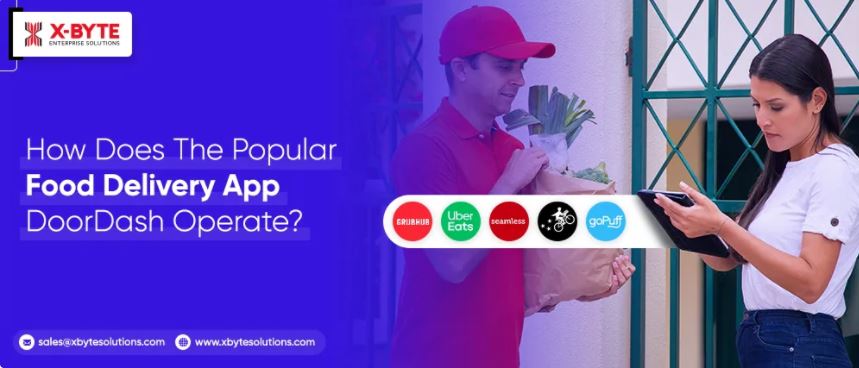
With food delivery apps like DoorDash, it is easy to explore a range of cuisines, restaurants, and menus at competitive pricing. Certainly, Doordash is one of the giants in food delivery creating buzz around these days.
According to reports presented by Forbes, on-demand food delivery services have seen a rise by almost 20% every year. It will generate revenue of around $365 billion by 2030.
Well, the reports also say that the food delivery business is facing tough competition in the market. So, if anyone is willing to enter the food delivery business and hire food delivery app development services, they should understand and learn from the achievements of DoorDash and how it managed to grab the first position in the food delivery niche in just 7 years after its foundation.
If you are among those who are curious to know how the DoorDash food delivery app operates read through the blog to know more.
About Doordash
Doordash operates in 4000 plus cities and has 340,000 plus stores all over the US & Canada. It was founded in the year 2013 and has generated $2.5 billion since its foundation.
How Does DoorDash Operate?
Just like other logistic-based on-demand start-up structures, DoorDash also started similarly. Let us look at how this food delivery service provider operates
Select Order
DoorDash Food Delivery App helps customers to navigate through menus and restaurants using filters like nearby restaurants and restaurants offering discounts etc.
Customers can create their order just by selecting the particular food items of their choice from their favorite restaurant.
Payment System
After placing the orders, users can move to the payment gateway and select from different payment methods to make the payment.
Track Order
Once the order is placed DoorDash sends it to the restaurant chosen by the user. The order is then received by the restaurant and the user can track the order status like packed, prepared, on its way, etc.
The delivery agent will pick the order and it will be delivered to the customer’s doorstep. The Food Delivery App like DoorDash helps users to track the real-time location of the delivery person.
Delivery
Once the delivery agent delivers the food to the customer, the customers can give them a tip if they want to. The tip is given to the respective delivery agent only.
The Business Model Of DoorDash
The business model of a Food Delivery App like DoorDash is amazing. They follow a business model with Y-structure. The model focuses on 3 different areas of the food delivery chain.
It works in collaboration with all 3 areas - customers, restaurants, and delivery agents. The food delivery app gives the liberty to their customers to pick from several options, helps its restaurants to access a huge customer base which otherwise becomes difficult for them to reach the customers.
DoorDash also manages both parties by helping them track the delivery person and get real-time details of their location.
DoorDash manages the operation and interconnection of these 3 elements giving excellent experience to its stakeholders.
The customer gets all the benefits of easy ordering from anywhere and anytime, the food delivery app also offers them competitive pricing and an active delivery tracker.
The restaurants collaborating with DoorDash do not have to worry about food getting delivered to their customers. Hence, they can give more time to their core business like improving in taste and quality of food, adding new menus, etc
Also, collaborating with 3rd party delivery service providers is flexible for restaurants. They can save costs on hiring delivery agents. It helps small setups get the boost the most.
The delivery agents or the drivers are called Dashers and DoorDash gets a flat fee against each delivery they process weekly. It offers employment opportunities to many people who are the only bread earners in the family or solely dependent on this job.
How Does Doordash Generate Revenues?
Doordash generates revenue from
- Commission on orders
- Delivery fee
- Advertising
Conclusion
DoorDash strives to offer newer experiences to its customers. One of the features ‘Delight Score’ is all about that. The feature helps customers rate the restaurants on a scale of 1 to 10 and other criteria like food quality, hygiene, etc
DoorDash's main objective is to help its customers get quality food delivered to their doorstep. They work to improve user experience and hence they have a huge base of customers associated with their food delivery app.
Why Choose X-Byte Enterprise Solution For Food Delivery App Development?
When it comes to building a Food Delivery App like DoorDash, many firms that deal in food distribution are worried about the costs associated with food delivery app development services.
X-Byte solutions will take away all your worries and help you build an amazing food delivery app. With our dedicated team of developers and their vast experience in app development, you can get a food delivery app that matches your business needs.
Associate with X-Byte solutions and you can get fusion of all the advanced features to beat the competition.
We also give shape to your ideas, so if you have a vision as to how your food delivery app should be, reach out to us to help us understand your requirements.
Our team of developers will get back to you with a live demo, approx a quote for your mobile app development needs.
| Read Original Blog Here : How Does The Popular Food Delivery App DoorDash Operate?
0 likes · 0 comments
Bhavesh Parekh
2 years ago
Post from Bhavesh Parekh
The Important Swift Design Patterns For iOS App Development

One of the main things to be considered while using Swift is to decide the design patterns for ios app development and implement them correctly.
Swift is a new language and thus a lot of developers are not aware of the right way to use it. It is important to use precise design patterns and build stable and high-quality apps.
Let us learn about the common Swift design patterns to make the right decisions.
What are Design Patterns?
Designed patterns can be explained as a solution to a particular issue faced while designing the structure of an app. Remember the design patterns are not a set of codes to be integrated into an app. They are the ideas that explain how issues can be resolved. It is a template that shows you how code can be written to resolve the issue.
Benefits Of Design Patterns
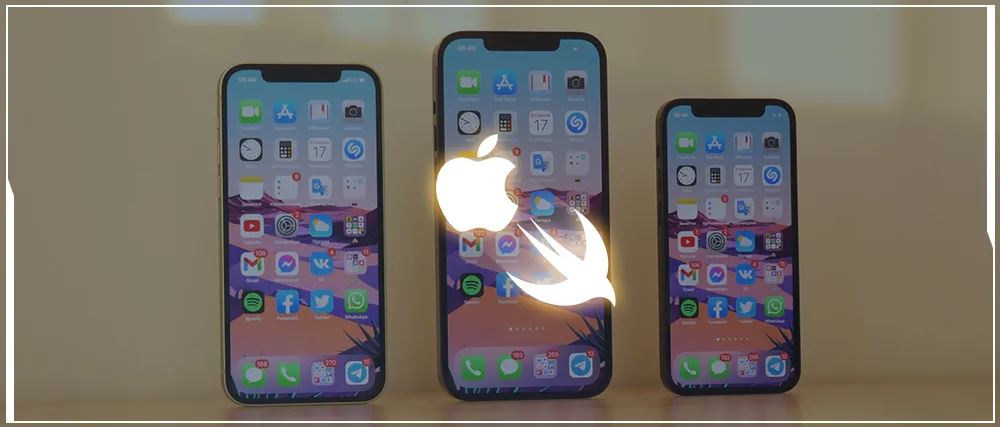
Tested Solutions
Here you don’t need to spend time in trial and error to find the solution to a specific software development issue. This is because design patterns offer the perfect solution for the problem and tell you how to execute it.
Code Unification
You can get ideal solutions with design patterns. These solutions have already been tested for bugs and cons. It helps you avoid a lot of mistakes while designing the structure of an app.
Common Vocabulary
For any software problem, you don’t need to explain in detail how to resolve it, you can just tell the developers the design pattern you utilized and they will understand the solutions you integrated.
After knowing about what design pattern is and their benefits let us know about
Types Of Swift iOS Design Patterns
Creational
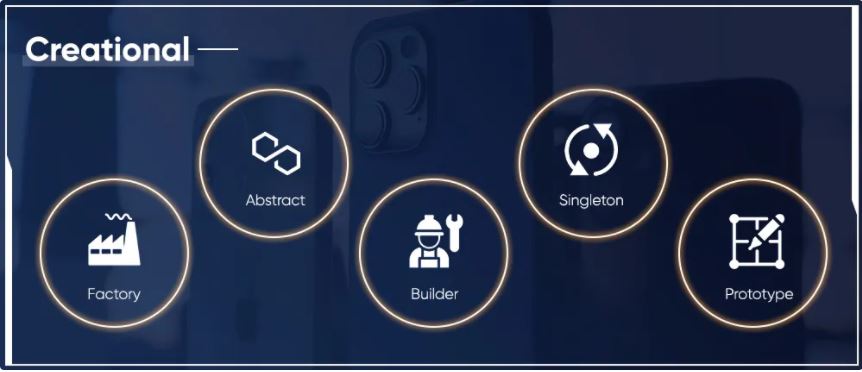
They are associated with object creation techniques. It is one of the iOS Swift design patterns that offer a precise indication to portray objects to be used in a particular situation. The main creational design pattern techniques are
- Factory
- Abstract
- Builder
- Singleton
- Prototype
Structural
This type of Swift mobile app development pattern allows simplifying the design by determining the easiest method of incorporating connection between classes and objects. The most common structural design patterns are
- Bridge
- Façade
- Composite
- Adapter
- Proxy
Behavioral
These design patterns exhibit major common communication patterns existing between entities. Some of the popular behavioral design patterns are
- Chain of Responsibility
- Template Method
- Command
- Iterator
Top Swift iOS design patterns used by developers
Builder
It is a creational design pattern that helps developers to create complex objects from simple objects.
When The Design Pattern Can Be Used
- To build complicated objects
- Need different views of a specific object
- Wish not to use telescopic constructor because of its complex code
Adapter
It is a structural design pattern that helps two or more objects connect with an unsuitable interface to work flawlessly. This design pattern converts the interface of a particular object to help the object adapt to a distinct object.
When The Design Pattern Can Be Used
- Wish to include 3rd party object in the app but the interface doesn’t go with the remaining code
- While using multiple subclasses in a single app or cannot increase the superclass
Decorator
It is a structural design pattern that allows adding features of the existing objects by masking them in useful coverings. The design helps to wrap objects hence known as the Wrapper design pattern.
The pattern can be used to wrap two or more objects together provided the objects own a similar interface
When The Design Pattern Can Be Used
- It is not possible to include new features to the object via inheritance
- Wish to include features to the objects while hiding them from the code
Façade
It is yet another structural design pattern that provides a simple interface to a library, a set of classes, or a framework. With this, you don’t need to display multiple methods with multiple interfaces.
Façade allows you to build your class & wrap different objects in to make the code and interface easy to use for the users.
When The Design Pattern Can Be Used
- To provide a unified and straightforward interface to a complex subsystem
- Need to break up a subsystem into multiple layers
Template Method
It is among behavioral Swift design patterns which are used to define a framework for the algorithm and assign responsibility to all the subclasses. It gives the flexibility to subclasses to re-assess some steps present in forcing any modifications in the entire structure.
When The Design Pattern Can Be Used
- Need subclasses to widen a simple algorithm within changing the structure
- Need different classes accountable for the same actions
The above Swift design patterns are few to name as there are some other iOS Swift design patterns used by iOS developers across the world.
Wrap Up
The above Swift design patterns are the top 5 patterns used widely for mobile app development. It is important to choose the right pattern while building a secure and functional app. The above design patterns offer an app that is easy to upgrade and maintain. Hence using these patterns in your app will help you simplify the app development process and offer amazing code quality.
If you are not confident about what Swift design patterns to choose from for your app, X-Byte Enterprise Solution will help you not just choose the right design pattern but will assist you with the Swift app development process to give you a secure and functional app.
| Read Original Blog Here : The Important Swift Design Patterns For iOS App Development
0 likes · 0 comments
Bhavesh Parekh
2 years ago
Post from Bhavesh Parekh
Why Is A Digital Menu with A QR Code System Essential for Hotel & Restaurant Businesses?
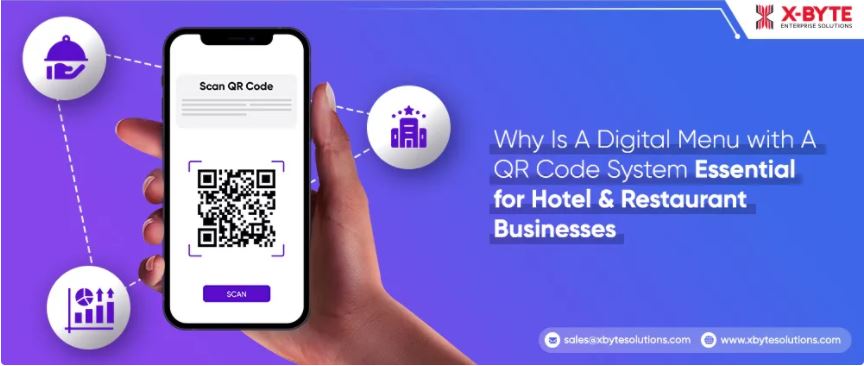
Incorporating QR codes into product marketing and packaging strategies is helping restaurants earn profits. Well, what exactly do QR codes mean for restaurants? It is about allowing customers to use QR codes for daily interactions to connect with products and businesses.
Why mobile restaurant QR code menus are gaining popularity for restaurants, hotels, food ordering, hospitality, etc. Let us look at some of the benefits of QR code menu
Benefits Of QR code Menu For Hotels And Restaurants
The food chains are getting benefited from the switch from the conventional food menu to interactive online menus. These menus have helped them accelerate and organize the business process.
With QR code digital menu a lot of restaurants and food chains are serving the industry. Here are some of the benefits
Contact-less Operations For Customer Safety
With the start of the corona pandemic, social distancing and hygiene were the most crucial factors implemented to stay away from a virus. This brought in the interactive digital menu to follow safety protocols through contact-less ordering and delivery. It helped restaurants and hotels help people browse through digital menus, order, and pay digitally.
A Cost-effective Approach For Customers As Well As Restaurants
One of the primary advantages of restaurant QR code is that they proved to be cost-saving for both restaurants and customers. As a customer, you don’t have to wait in a queue to place your order. You can just view the digital menu for various cuisines and meals and save time going to the restaurant.
As a restaurateur, a digital menu QR code helps save money as you can update the menu electronically. It saves your printing costs on new menus. On the other hand, even if you need to print & distribute QR codes inside your premises, it will not occupy much space which in turn saves the running costs.
QR Code-based Menu Systems Enhance The Brand Value
The main aim for restaurants is to create brand awareness. It is possible through the introduction of a digital menu for restaurants, bars, hotels, etc.
The restaurant managers will make sure that the menu deals and offerings are updated constantly. Also, the managers ensure that the deals are highlighted properly in different locations. It aids synchronized marketing and communication.
Also, if the digital QR-based menu comprises high-quality photos, videos with food preparation details, it accelerates sales.
Creates Brand Awareness On Social Platform
When people check out the online menu of your restaurant via mobile phone, it helps them share the menu, brand, or food on social media.
Impressive Menu Design

A digital menu is created to aid excellent user experience at the front end. The menu can be designed to highlight the popular items to increase order value and maximize conversion rates.
Error-free Experience For Stakeholders
Using digital menu QR code for restaurants is the best way to reduce the possibility of errors. For example, a waiter making mistakes while taking orders from the customers. When it comes to digital menus, they are programmed to allow customers to place their orders on their own thereby reducing the chances of errors.
QR menus for hotels offer benefits as they can be the perfect attraction for tourists. This is because these menus are easy to browse, prompt services, and menus can be displayed in multiple languages.
Well, language can be a barrier while ordering food, but this problem can be sorted out by using the QR menu. QR menus being available in multiple languages and accessed easily, it allows consumers to place an order just by viewing the menu.
Why Do You Need To Adopt Digital QR-based Menus For Restaurants?
Looking at the benefits above, you must have got a fair idea about how QR code menus can help your restaurant business. Customers are used to QR codes for purchases, payments, food orders in their daily life.
It has helped businesses integrate this technology for improved business operations. When consumers view a restaurant QR code menu, they know how to use it. Hence, QR codes are widely accepted and used by consumers easily.
Also, consumers are aware of the safety associated with QR code digital menu for restaurants. All they need to do is just place their order without any direct physical contact using the digital display systems of the restaurants.
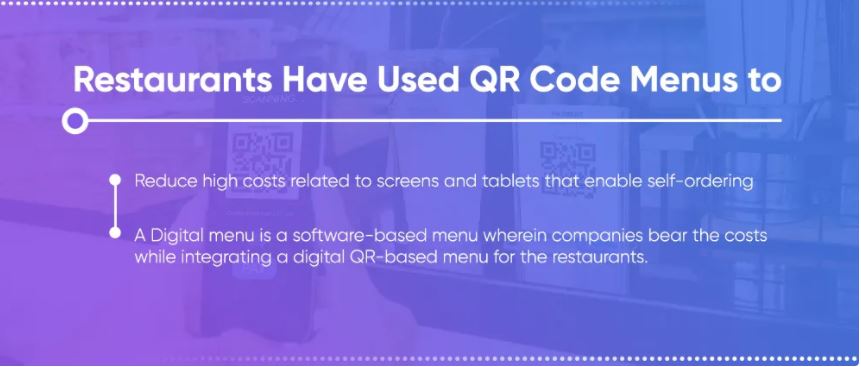
Restaurants have used QR code menus to
- Reduce high costs related to screens and tablets that enable self-ordering
- A Digital menu is a software-based menu wherein companies bear the costs while integrating a digital QR-based menu for the restaurants.
The new QR code trend has helped restaurants enhance the consumer experience while keeping them safe.
Conclusion
With QR code digital menus, the restaurant business has been simplified. Technology has helped restaurants offer amazing customer experiences.
The above-mentioned benefits of a QR code menu for restaurants are just a few to be counted. There are a lot of other benefits that help restaurants keep their customers and staff safe.
With time, consumers’ preferences are changing too. It can help restaurants increase margins, accelerate table turnover and resolve staffing issues too.
In the coming years, restaurants will be taking more data-driven steps while introducing opportunities that increase profitability.
You can introduce a QR code menu for your restaurant to enable easy and swift operations. Get in touch with X-Byte Enterprise Solutions to embrace the technology for your restaurant. We will help you improve the consumer experience.
| Read Original Blog Here : QR Code System For Hotel and Restaurant Business
0 likes · 0 comments
Bhavesh Parekh
2 years ago
Post from Bhavesh Parekh
Which are The Top 5 Food Delivery Apps in The USA?
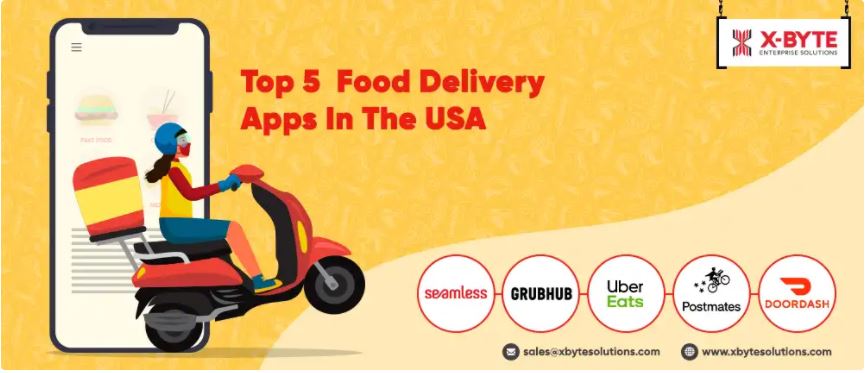
Covid-19 has revolutionized how we socialize with our friends, family, and coworkers. Nowadays, no gatherings and parties are permitted. You can only order food through a food delivery app and enjoy it at home. Some industries encountered difficulties as a result of covid-19, while others saw their firms flourish. Food Delivery Apps in the USA are an example of huge growth in this pandemic. According to several sources, 78 % of consumers in the United States began purchasing food online in 2020, up from 53 % in 2019. The market for online food delivery apps is currently valued at roughly $45 billion, with projections of $60 billion by the end of 2021. Without any doubt this is the ideal time to enter this industry. To receive millions of dollars, all you need is a well-designed meal delivery app and a bank account.
The United States is known for the technical progress they provide over the globe. Many times, they establish the prototype, and the rest of the world follows the same. Food Delivery App Development and smartphone applications have experienced the same fortune.
They were the ones to initiate the startup. Seamless began as a food ordering website in the United States in 1999, and is still a well-known name in the world of food delivery.
Let's have a glance at top food delivery mobile apps in USA.
1. SEAMLESS
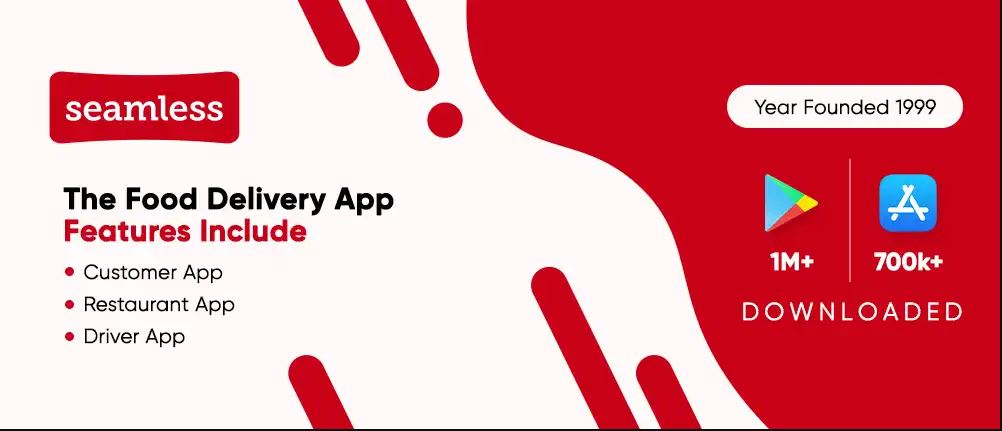
Seamless has evolved into a one-stop shop for food delivery. It is the most widely used food ordering application in the USA.
The Seamless food delivery company is headquartered in New York City, USA.
Food delivery and takeout are available in over 600 cities currently.
The Seamless food delivery company is headquartered in New York City, USA. Food delivery and takeout are currently available in over 600 cities.
Seamless now has over 1 million Google play user’s and over 700,000 on the Apple App Store. Because of the Covid-19 epidemic, the company has been taking extra shipping procedures.
specialities:
- Customer Application
- Restaurant Application
- Driver Application
2. GRUBHUB
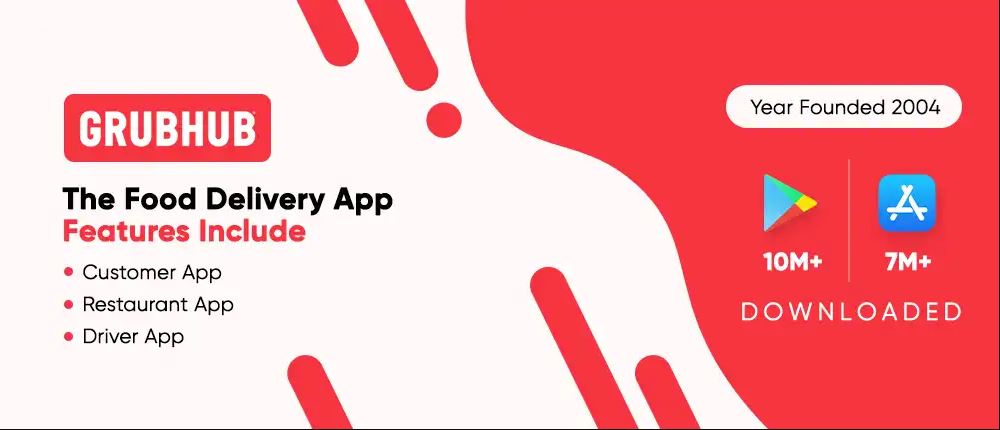
GrubHub is a restaurant order pick-up and delivery platform available online and on mobile devices. It also has corporate plans for those who want to use the food delivery app for business purposes.
There are around 20 million active users and 115,000 restaurants that are connected to it. There are about ten million active users on Google Play. It is available in more than 3000 cities in the United States and London.
GrubHub has always committed to and continues to adhere to the strict Covid-19 delivery protocols in order to protect their people and followers from the deadly virus.
specialities of the application:
- Customer Application
- Restaurant Application
- Driver Application
3. Uber eats

UberEats has been named the Best On Demand Food Delivery Application in the USA numerous times throughout the years. Uber is a well-known and well-respected organization. There is no need to register; anyone can log in to Uber Eats using their Uber cab service credentials. Uber Eats, like GrubHub, uses location to show the closest cafés and restaurants.
Uber Eats is a similar app to Uber Taxi in that it allows you to order food on demand. It offers full menus from surrounding eateries and restaurants, as well as the option of having the food delivered to the user's door. In the United States, it is one of the most extensively used meal ordering apps.
Uber Eats is an on-demand meal ordering service in the United States, similar to Uber Taxi.
UberEats is currently available in more than 500 cities and 24 countries around the world as of 2021. Because of the pandemic, the company is taking extra precautions to safeguard its clients and drivers from the virus.
UberEats Food Delivery App Features
- Customer Application
- Driver Application
- Provider/Restaurant Application
4. Postmates

Postmates is now a smartphone application in addition to being a logistics and on-demand delivery network. Its business strategy is similar to those of its competitors, but it takes pride in delivering on time, which people appreciate.
Postmates is a food delivery software development company based in the United States that operates in over 4000 cities. Uber will buy Postmates for USD 2.65 billion on July 6th, 2020. To summarise, Postmates is available in all 50 cities in the United States.
On the Google Play store, Postmates has over 10 million users, while on the Apple iOS store, it has over 5 million.
specialities of the application:
- Customer Application
- Restaurant Application
- Driver Application
5. Doordash
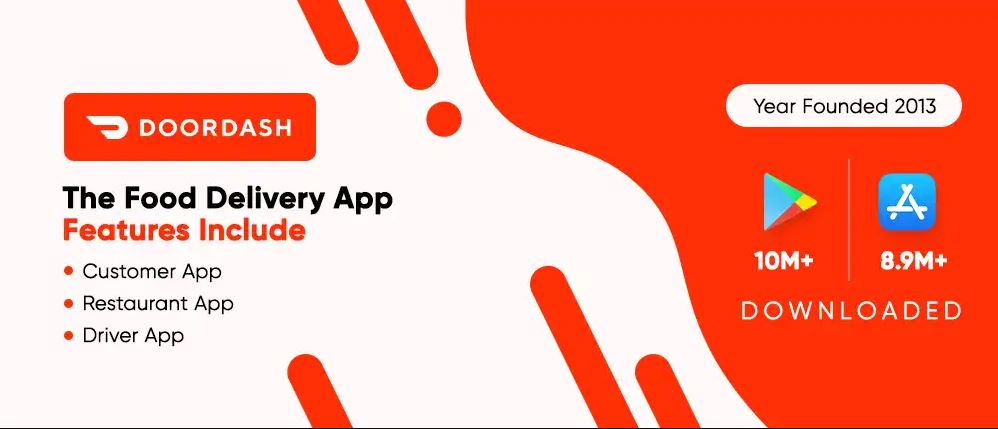
DoorDash is an on-demand delivery business based in the United States that connects restaurants with food delivery. It is a community-driven delivery powerhouse in the local area. The company began its prime operations in 2013. In terms of market share and valuation, DoorDash surpassed UberEats in the first quarter of 2019. It is one of the most well-known food delivery application companies, with a market capitalization of USD 16 billion.
The DoorDash app offers a delight mode that rates restaurants based on user reviews, average delivery time, and charge cost. This app is available in every city in the United States, as well as parts of Canada. A futuristic software like DoorDash can only be designed by professional Dedicated Mobile App Developers.
The company's food delivery service is available in more than 800 cities across the United States. During the Covid-19 outbreak, DoorDash implemented "contactless" delivery to ensure that both their drivers and customers had a safe delivery experience.
specialities of the application:
- Customer Application
- Restaurant Application
- Driver Application
Currently, DoorDash has 10M+ users on the Google play store and 8.9 million users on the Apple store.
Conclusion
The development and improvement of Mobile App Development have altered every industry including the food industry. There are many foodies out there looking for a better application. Covid-19, on the other hand, has propelled the online food delivery sector.
If you are an entrepreneur, and you are in quest of some prolific and lucrative business opportunities in the food industry this might help you with the necessary information.
| Read Original Blog Here : Top 5 Food Delivery Apps in USA
0 likes · 0 comments
Bhavesh Parekh
2 years ago
Post from Bhavesh Parekh
Why The On-Demand Business Is A Successful Model For Startups?

In recent times, we have seen a lot of changes in our lifestyle due to the corona pandemic. We all have accepted the changes for the betterment and so have the businesses to serve their customers better.
Today, everyone is busy and has hectic schedules to follow. So, we need everything at our fingertips. If you are a startup and wish to help the customers meet their daily needs, do not follow the traditional business modules else you wouldn’t see the growth in your business.
Looking at the modern methods of on-demand business app development are gaining momentum. Everyone is using mobile to get solutions for everything and hence the on-demand business economy has witnessed growth in the past few years.
Whether you want healthcare services, food, courier, you can get it delivered at home by online ordering. Certainly, technology has made it possible.
If you are a startup then consider having an on-demand business to serve your customers better. Well, you may think why consider on-demand businesses a successful model for startups?
Let us look at some factors that will help you understand why the on-demand businesses a successful model for start-ups?
Advantages Of On-Demand Apps For Business
Get Benefited From Mobile Usage

Almost 90% of people spend most of their time on mobile apps instead of the mobile web. This factor helps you benefit from app presence. It is one of the beneficial business strategies that can give a much-needed boost to your startup. Include custom features to help your customers uniquely connect to your business.
Digital Communication Is Trending

With time and the introduction of technology, the hard copies of labels and receipts have been reduced to a greater extent. The information is now stored in the app. So, your app is the source of saving and retrieving information for your on-demand services.
All the communication related to your services or goods purchased by your customers is stored on your app. When a customer interacts with your service executive with some inquiries or complaints, they will have a record of that interaction too. So, it helps enhance the overall customer experience.
Enhance Performance & Security
The main benefit of an on-demand business app is that it becomes easy to improve the performance of your business while taking care of your customers’ interests.
For instance, if someone orders a food parcel through your app that they plan to pick up from the store. They don’t have to wait in long queues to get their parcel. They can just pay online through a secure payment gateway and walk away with the parcel.
When it comes to customer demands, they are changing constantly and you can change your on-demand business app accordingly. With apps for on-demand services, you can make the entire delivery process flexible and cater to the demands of the customers.
Proficiency
The on-demand services app is designed to enhance the proficiency of your business. The app will help your business get wider market exposure and a higher audience with an improved customer experience. So, in turn, you will get maximum ROI for your business.
Explore New Opportunities
When running a business, you need to grab the right opportunity to grow and get more profits. It can be accomplished with an on-demand app that helps you discover new opportunities.
With an on-demand app, the users sign in, share their details like email address, phone number, etc. With these details, you will be able to know that the customers would need a similar service in the future. So, this is the right opportunity to ensure that the customers should come to you again for the same product or service. You can use the users’ information to offer them discounts, offers, etc
Long term perspective
If you are looking into the business, you cannot afford to operate your business with something free from a long term perspective.
Certainly, investing in on-demand service app development may sound a little costly, but ROI would make it up for all your expenses. Also, it will offer an amazing shopping experience for your customers by helping you gain loyal customers.
Hence, you should hire the best mobile app development company to build a scalable on-demand app for your business having all the essential features. Let us have a look at some crucial features to be integrated into on-demand business apps for start-ups
- GPS Tracking
- Notification
- Activity list or Wishlist
- Payment Gateway
- Rating & review
- Booking & cancellation, etc.
Factors To Be Considered Before On-Demand Service App Development, To Choose A Profitable Business Model
Level Of Commoditization
It means the count of variables related to your product or service. You need to build an accurate process to help everyone use your on-demand app without any hassles.
Offer maximum freedom to the users so that they can have an amazing experience with your app. Try to find out the precise business model for your startup.
Focus On The Link Between The Supply Side And The App
As a start-up, to gain profits you may need to collect the current small business or decreasing the supply. Out of both these concepts, the former is easy to achieve. Still, if you want to focus on the latter, you need the perfect platform and on-demand business format to proceed
Pricing Model
When it comes to online business, pricing plays an important role. Yes, everything is transparent in the online module and everyone including your customers are aware of the price of a product or service and what your competitors offer.
So, it is important to keep your pricing competitive so that users can enjoy a quality product/service at a reasonable price.
Pricing affects demand so provide fair pricing to enhance a better experience to convert your one-time client to a regular one.
Stakeholders

Consider your stakeholder as well while developing apps as they are equally important for helping your startup grow
If you are not sure about how to go about on-demand service app development, Apps on Demand helps you get the perfect app to give your start-up the right start in business. We can customize the app to meet your business needs.
Conclusion
Talking about on-demand business apps for startups, it is a one-time investment that helps you generate revenues in the long run. You will get the highest ROI in return. So, focus on hiring an expert mobile app development company to integrate all the essential features to make your app user-friendly and functional.
| Read original Blog Here : On-Demand Business Is A Successful Model For Startups
0 likes · 0 comments
Bhavesh Parekh
2 years ago
Post from Bhavesh Parekh
How To Convert Android or iOS App Into React Native?
![% X-BYTE
How To Transform Native
Android & 10S App To
React-Native?
LT
[-]](https://contents.bebee.com/users/id/32716529846/post/k3oEX61232dbe3e0c6/oOsR3.jpg)
React Native is the most preferred language of developers. Undoubtedly, a lot of developers use JavaScript, but expert developers use its elements to accelerate development speed. Still, people prefer apps developed using native programming languages as they are powerful. Similarly, converting an iOS app or native Android Application to React-Native can help you get the app developed faster.
What is React Native?
Well, React Native is utilized to build native applications. React Native developers use native Android & iOS features to build mobile UIs having declarative components in place of web components. React Native works just like React. The only difference is that in place of Virtual DOM, it utilizes native views to manage DOM.
Why use React Native?
In case you already possess a native Android app, it is easy to convert a Native Android Application to React-Native module without building a React Native app.
React Native apps offer a perfect solution in many cases. You can convert an Android or IOS app to React-Native to save a lot of time.
How To Transform Android or iOS App in React Native?
It is a simple process that helps you convert iOS or Native Android Application to React-Native
Let us have a look at the steps that help convert Android or IOS application to React-Native
Configure Maven
Maven needs to be configured and for that, you need to add React Native & Javascript elements to the library build.gradle file.
Make sure you include an entry for JavaScript maven directories & React Native to ‘all projects’. Remember, double-check the final path at this stage itself.
Activate native modules auto-linking
To initiate auto-linking, you have to create an entry to - settings.gradle. After this add that entry to - app/build.gradle.
Configure the permissions
Check if you have Internet permission. It can be checked in - AndroidManifest.xml. In case the user flow demands you can access - Dev Setting Activity, and add this activity to - AndroidManifest.xml.
Clear Text Traffic
In case the Android version you are using is higher than 9, you will find cleartext traffic to be disabled.
It will stop your application from linking to Metro builder. You can use the code – “user Clear textTraffic” to “AndroidManifest.xml” to enable the connection
Integration Of Code

The process of integrating code needs the developer to follow the steps given below:
- Create an index.js file.
- Include React Native code
- Ask permission for development error overlay
- Render Render JS component
As a default process dev menu will be enabled except in emulators. Here, you need to use ctrl + M to implement JavaScript code for testing.
Testing
At this stage, we need to test the conversion to make sure that the React Native app is operating as expected. You can use Metro builder to build - index.bundle.
Benefits Of Using A React Native For Your Native Android And iOS App
Everyone needs a scalable, functional, and user-friendly app to beat the sharp competition. Hence, cross-platform app development is trending to meet the needs of app development.
React Native is the ideal framework for conversion of Android or IOS apps as it offers a secure and efficient app. Also, the app development process can be performed. The benefits of React Native that you will get after the conversion are
Higher Performance
When it comes to the performance of React Native, it makes use of distinct threads via Native applications and UI. React Native gets connected to the OS easily and generates the code required for native API.
Reusability Of Components
Reusability is among the vital features of React Native which helps developers convert IOS app to React-Native as it reduces the time take for overall development for the developers. It is because the developers just need to replicate the components.
Interestingly, all the execution of the Native framework can be performed by just reusing the codes irrespective of the OS
Live Reloading
React Native owns 2 main features
- Live reloading
- Hot reloading
These features allow you to check the outcome by simply running the code and reduce the wait times needed for alterations before making the app live.
Excellent Community Support

As React Native is an open-source framework, the developers find it easy to work with. With their experience, they also share tips and tricks in the community to help others find solutions to their queries. It offers excellent community support for others to learn more about React native and execute practically.
In case you cannot spare time to interview or research the best software development company to convert your existing Android or iOS application to React Native, then X-Byte Enterprise solution can assist you to get a fully functional Reactive Native app after conversion. Connect with us to share your requirements.
| Read original Blog Here : How To Convert Android or iOS App Into React Native?
0 likes · 0 comments
Bhavesh Parekh
2 years ago
Post from Bhavesh Parekh
How to Convert an Android App to iOS?
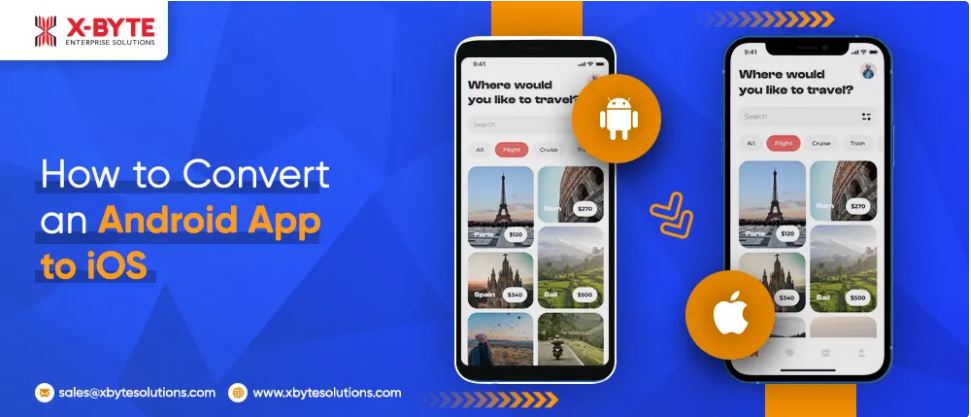
Well, the need to convert Android applications to iOS App is felt by many business owners to sustain in the market. The reasons are many and let us have a look at some of them
Reasons To convert Android Application To iOS
Well, you have all the reasons to convert the android app to iOS to cement your position in the market and also be part of the success worldwide.
Profitable Market And High Demand
Whether you want to convert Android to iOS, you need to assess your audience. Yes, it means if 90% of your audience is on Android as well as iOS then it is worth investing money on both platforms. It means if you can see a strong market on the app store for the app you are planning for then it is worth giving a thought.
More Opportunities For An Increased Customer Base
Once you launch your app on a different platform, you are opening doors for more opportunities and customers. If you are solely dependent on either of the two platforms - Android or iOS, you are still missing the group of users who are using another platform.
So, if you are planning to convert android applications to iOS, do not eliminate Android OS as iOS and Android together will offer more profits for your business.
Explore New Markets
In case you want to hit new markets, having apps on major OS platforms would be a sensible decision. If you are thinking of expanding beyond just the USA to other countries like Asia, Africa, and Europe, then the android app would give you the boost. Similarly, if you want to hit the markets in Oceania, North America, Japan, Saudi Arabia, etc the iOS app development is the crucial platform you need to expand your business.
Two Apps Work Better Than One
With 2 apps you can generate better revenues as you offer two distinct channels to your target audience. Hence the idea of converting the android application to iOS app while keeping the android app accessible to the users can help gain profits.
Edge Over Competitors
When it comes to selecting the right platform, your competitors may go with just a single platform. So, developing an app for both iOS and Androids can help you give a competitive edge and create your identity in the market.
Data Available In Abundance For Analysis
Data & analytics are an integral part of successful apps. With sufficient data available it becomes easy to analyze the behavior of the users and know the demands of the market.
Factors To Be Considered Before Converting an Android Application to iOS
Before you plan to convert android to iOS you need to follow some basic measures for error-free and seamless conversion of Android applications to iOS
Choose A Programming Language
![How to Convert Android Application to iOS App
eo
Assess technical
[qv
Pep CY PEs] “estng
structure](https://contents.bebee.com/users/id/32716529846/post/hqWMn611b556c54bb5/YsXBN.jpg)
When it comes to programming language for android app development, Kotlin proves to be the fastest, simplest and seamless language.
Well, many people think that they just need to translate existing code to convert the Android application to iOS. This is not true. Programming languages also come with their set of algorithms, rules, syntax, and semantics. The programming languages used for both iOS and Android OS are different.
For Android OS Kotlin & Java are the programming languages used for development and for iOS (Apple products) Swift & Objective-C are used.
Organize The OS Versions
Unlike a range of Android operating systems, iPhone devices running on a single iOS that update with each new release of iPhone. It means once a new version is launched, all the devices compatible with that version are updated at the same time.
So, choose the last version of iOS to convert to manage the potential users.
How To convert Android Application To iOS App
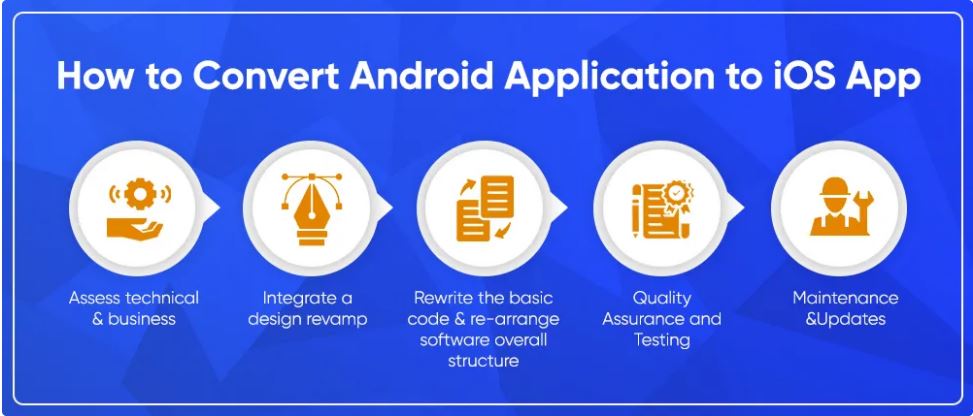
Step 1
Assess Technical & Business Requirements
You need to perform an in-depth analysis of your business needs and to know the compatibility details of the iOS platform along with 3rd party modules & libraries.
You need to analyze
- Functional details
- App designs details
- Business logic modules
- source code variation
Step 2
Integrate a Design Revamp
Some major elements of Android applications need to be revamped and modified as per the flat design standards. The Flat design revamp includes creating 3D-esque, visuals, etc
Step 3
Rewrite the Basic Code and Re-arrange Software Overall Structure
Certainly, Android app code cannot be used to match the iOS architecture and hence you need to write the entire code. The process of code Converting is all about revising and executing step by step to ensure seamless workflow.
Step 4
Quality Assurance and Testing
The above two stages are the most crucial ones to be considered when you convert android to iOS as you need to test the UI/UX functionality of the application. Also, QA helps ensure the quality and smooth functioning of the app.
Step 5
Maintenance & Updates
The end product will be an Android to iOS app conversion process that needs to patch up errors if any when the software goes live. Also, it is important to initiate timely product updates.
So, if you are planning to convert an Android app to iOS, X-Byte Enterprise Solutions offer a convenient transition with the help of its dedicated team of mobile app developers.
Conclusion
Converting Android applications to iOS is a detailed process that requires all necessary efforts to manage software improvement, modification, and optimization to match market needs. The process is complex but pays you back in the long run. You would be able to hit new markets and target potential audiences.
| Read Original Blog Here : Android App To iOS App
0 likes · 0 comments
Bhavesh Parekh
2 years ago
Post from Bhavesh Parekh
5 Predictions For The Coming Years Of IoT & Mobile App Integration

IoT (Internet of things) and mobile applications are the two most important technologies which will change the entire world. If we think about the interconnection of IoT & mobile applications and how they are contributing to the change for improvement, it is mind-blowing.
We are living in the world of smart devices and almost everything we do can be done through gadgets and smartphones. Moreover, IoT is going to make the mobile app development process easier than ever.
Mobile app development companies are building apps using the latest technologies like IoT. With that comes the change in trend and new upgrades in IoT as well as mobile application development.
Automotive Apps On Rise
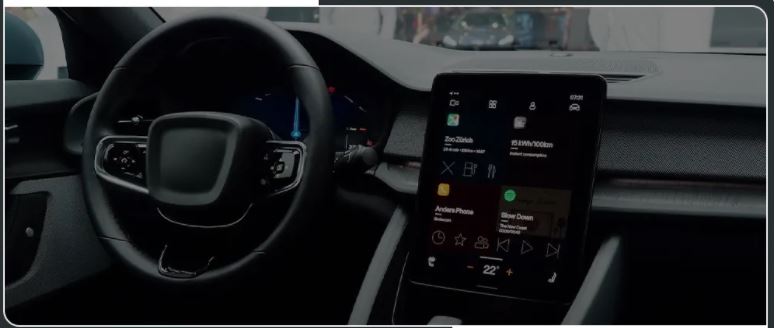
Automotive applications developed using IoT are on the rise and for automakers, such apps are becoming a necessity.
Today, only the giants in the automotive industry are building IoT-based apps but the day is not far when IoT & mobile app-based automobiles will be designed by every automaker and we can see those vehicles on the road.
You can see excellent IoT-based automotive apps available in the market. Talking about this technology, the most interesting thing about this technology is it helps individuals to carry out different tasks without driving. It means they can follow the safety rules too. Here are some features that can be associated
- Enable online anti theft alarm
- Call roadside support
- Attain traffic details in real-time
Now, it is not just about tablets, phones, PCs, etc that are connected, but robot vacuums, washers, door locks, toasters, etc are some smart gadgets you can find in the market that connect to the network. Certainly, IoT has made it possible.
Future Of IoT - Predictions
1. The Enhanced Retail Shopping Record
This is another sector where the combination of IoT & mobile apps can be changed to change retail shopping completely. For example, Amazon Go shop wherein webcams, IoT sensors, and different retail devices cut down the long checkout queues.
Yes, Amazon Go shop allows customers to shop just by scanning barcodes available at Amazon Go’s app. This app sends out the receipt once the customer leaves the shop.
Yes, this amazing mixing of IoT & mobile app integration has helped the newbies in retail to offer an excellent buying experience. In the coming years, more retail stores will spend money to adopt this technology.
2. Security Regulation
Looking at the current IoT features, it will be easy to respond to security quickly and focus on technologies. IoT experts are thinking about management and security in the long run.
Also, the regulators are trying to create a system that would help IoT product developers to identify the problems if the cybersecurity system fails.
3. Introduction of Smart Cities
Talking about the IoT smart city solution, many civic authorities may plan to install gadgets to trace the drivers & motorists breaking safety rules on the road. The gadgets, such as video or monitoring kiosks would make the vigilance task easier. Certainly, these gadgets will be inter-connected. Looking at the benefits of the gadgets, they will leave no scope for errors or other flaws from the authorities' end.
4. Improved Data Security combined with Auto ML
According to industry analysts, the chances of data leaks would see an increase in the coming days. It can result in firms losing their money. To stop the leak, the companies will have to invest in internet of things and mobile app integration-based technologies to enhance data security.
Also, Machine Learning would be 100% computerized and it will manage data security. Moreover, ML tool kits now are trending among brands looking for enhanced data protection.
5. Replacement Of Cloud Computing By Edge Computing
When it comes to data storage, IoT devices are dependent on the cloud for quite some time now. Well, IoT producers, developers, and programmers also got to know how important data storage & analysis are with time. It means earlier for data transfer via an IoT device on cloud, the data was first transferred to a secondary device and later to cloud. It also means, before sending data on cloud, the secondary storage organizes, filters, and analyzes the data. The entire technique is termed Edge Computing. It comes with a lot of benefits as it helps in the management of huge chunks of data transmitted by a particular device & reduces the dependency on cloud which is earlier overloaded.
Future Of Mobile Application Integration
1. IoT Mobile Application Development’s Future
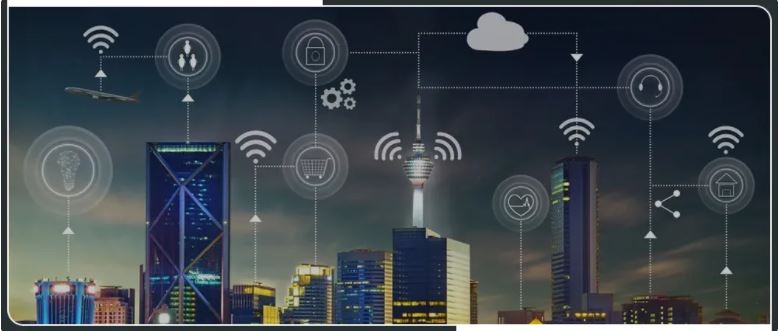
They facilitate the control over equipment and people, the IoT is growing rapidly. The growth of IoT data & mobile apps offers users access to real-time information about devices or humans promptly. It helps increase the efficiency of the process.
When it comes to IoT systems, its magic has already started creating an impact on major brands, enterprises, and businesses. Large businesses have started investing in this technology to offer their users seamless connectivity.
2. Artificial Intelligence’s importance in Mobile Application Development
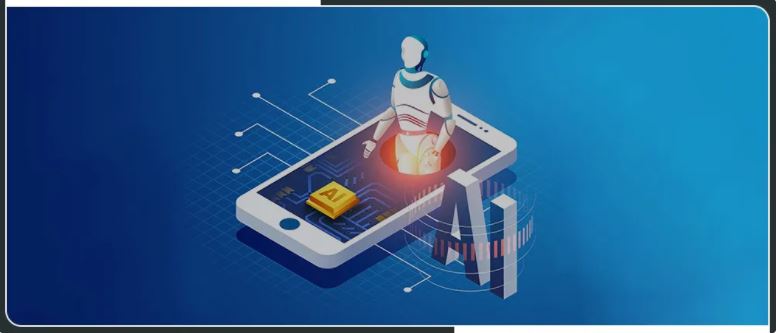
With the introduction of Artificial Intelligence in technology has changed the way businesses operate drastically.
AI-enabled apps are utilized by big brands to offer an intelligent customer experience using minimal resources and amazing profits at an affordable cost. Also, customers are enjoying personalized mobile experiences as compared to their experience in the past.
3. Impact Of Wearable Technology Over Web App Development
More and more businesses are emphasizing on apps that interact with most wearable devices. This helps provide information like a story. This approach will change a range of services and products in different verticals like health, hobbies, fashion, etc.
So, connecting wearable gadgets to smart devices comes with an impact on the next-gen mobile app development techniques. It will create a path for new trends of apps that will enhance user experience significantly.
4. Add Chatbot In Mobile App
Mobile applications and Chatbots are creating splashes in every corporate sector as both technologies help the firms gather large volumes of data to create a customized approach to the audience giving them a flawless experience.
5. Benefits of cloud backend for Mobile Application Development
With the rise in mobile apps for business the storage capacity can be a concern. Well, cloud storage is one of the effective solutions to combat this issue.
Well, Cloud services would enable smooth data collection for organizations. Also, security management and measures will be easier than ever before.
Conclusion
The above trends along with many others will witness the future of IoT & mobile app integration. The new technology will come in and will boost the emergence of the IoT & mobile app integration technique. The features of IoT are utilized by a lot of mobile application development companies to build apps.
If you want to take full advantage of IoT and mobile app integration, X-Byte Enterprise Solutions can help you develop a smart app that would excel in the long run. We help you get smart apps that will match and enhance the user experience by looking at the future of IoT.
| Read Original Blog Here : Mobile App Integration
0 likes · 0 comments
Bhavesh Parekh
2 years ago
Post from Bhavesh Parekh
How Multi-Service On-Demand Mobile Apps Can Increase Your Business Profitability

Most recent on demand solutions have offered lifetime open doors for business and purchasers to acknowledge administrations at whatever point they wish to benefit. The high paced tech organizations battling in this forefront have built up the most recent patterns, helping organizations that were generally delayed to refresh.
The taxi services, beauty services, and food delivery applications are fundamental models of on-demand sectors created on the earth. On demand service app exceptions have formed valuable business guidelines which can fulfill the needs of clients in a practical, adaptable, and proficient approach than their ancestors.
On-demand markets have all the more effectively overwhelmed innovation while utilizing a contending base. General purchasing on smartphones is the most essential move in purchaser history in the underlying time, and clients can buy anything they want with a single tap.
The rise of on-demand applications
This new collection of on demand multi service app based services are making the lives of metropolitan elites more creative by offering convenience; from feast conveyances to even vehicle washing and clothing, from escort driven vehicles to handymen.
There is no uncertainty whether the on demand economy can reform the manner in which individuals are living and executing on the everyday premise, since this is occurring.
On-demand services can be characterized as giving products and enterprises to the clients inside a minimal time frame period. While on-request applications can be considered as a connector among clients and various organizations, it's essentially the mobile application that has been created to give a more productive, helpful, and simpler method of services to the clients.
This new innovation has generally secured all the segments of the businesses which incorporate travel, transportation, clothing, food conveyance, instruction, staple, common assistance, medical care, excellence, and style items. In short we can say that clients are currently only a couple of taps from these services.
The Importance of Location for Multi Service App
The geographical area assumes a key function in distinguishing the services that are to be offered in a specific territory. Services like pet care, babysitting, beauty & spa services etc. well in certain districts. Identifying those key locales can offer you a solid favorable position over your rival. A careful report about a locale can give you quality bits of knowledge about the specific help bunches in those zones. For instance, in pro traffic zones, bicycle taxi services can offer a well off market return.
Client driven organizations consistently WIN!
Client driven is a business procedure that depends on putting your client first and at the center of your business so as to give a positive encounter and fabricate long haul connections. Providers are as significant as clients. You can't make progress except if you strike the harmony among gracefully and request. Providers are the spines of your on demand apps.
At first, you have to establish an away from your target interest group, your providers, and your bonus scale. The next plot includes moving toward providers; messages can do the stunt in explicit organizations while in-person provider visits can assist you with breaking the arrangement all the more rapidly.
Guarantee that your principles are clear, compact, and to the point. It is advisable to focus on the provider end at first instead of promising clients and fail to adapt to future demands.
Conclusion
On-Demand Mobile Application Development with Apps On Demand will enable you to breathe out. We are a specialist group of mobile application development and ready to meet your bespoke design.
| Read Original Blog Here : On Demand App Development
0 likes · 0 comments
Bhavesh Parekh
2 years ago
Post from Bhavesh Parekh
A Beginner’s Guide To eCommerce Mobile App Development
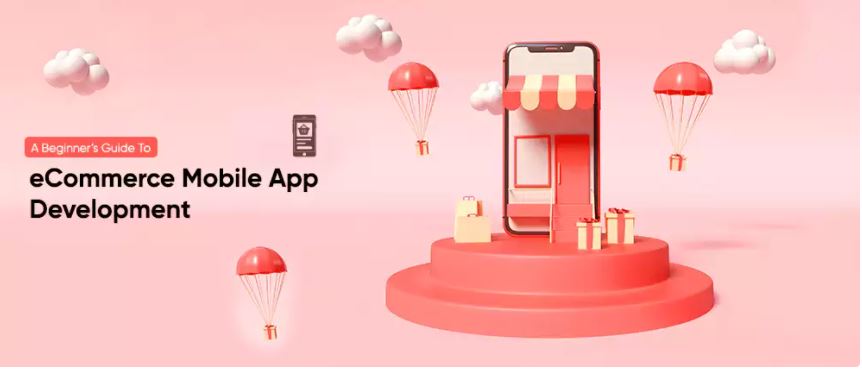
eCommerce mobile app development is the only future-proof concept today. Even a global pandemic couldn’t restrain the growth of mobile commerce solutions as people from around the world resorted to their apps to order food, groceries, products, services, essentials and more.
Having become intertwined with our lives, mobile eCommerce seems to have made desktops obsolete to an extent as well. Today, most of our purchases are impulsive and from our portable devices. We see a newsletter or a push notification on deals and we intend to immediately click on them and make a purchase. All our entertainment solutions are also through our mobile and tablet apps.
Key eCommerce App Development Statistics
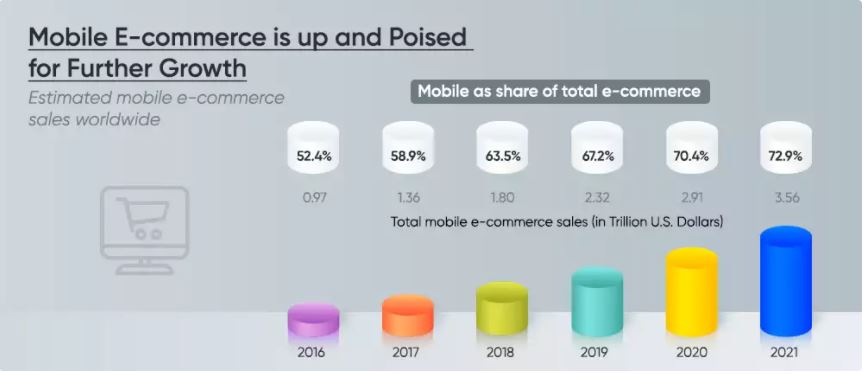
To give you an idea of how much eCommerce mobile app development has grown and has become an integral part of our lives, here are some quick statistics:
- Mobile apps are expected to generate a global revenue of over $935bn by 2023.
- Close to 21% of the millennials around the world access their apps over 50 times a day.
- The rest of the population opens apps over 11 times a day.
- There are between 10 and 30 different apps installed in the smartphone of an average user.
- Google Play features close to 2.87mn apps and Apple App Store houses close to 1.96mn apps.
- Over 79% of the users out there have bought a product or a service from their smartphone apps.
- Mobile-assisted purchases are also increasing in retail stores, where around 80% of the shoppers used an app to check out reviews, compare prices, view deals and do more.
- 78% of the users prefer to use an app over a website or a retail store.
These numbers are compelling and point towards the direction that your business needs to incorporate eCommerce app development if it intends to remain relevant and competitive in the market. While your competitors are witnessing increased traffic, conversions and sales, you might be missing out on a potential opportunity and may even end up losing your loyal customers to your competitors.
This is the time to adapt, improvise and overcome and this extensive guide will help you do that in the most seamless way possible. We have compiled all the contextual information you need to get started with eCommerce mobile app development for your business and make way for profits in 2021.
So, let’s get started.
Inevitable Factors To Consider For eCommerce Mobile App Development
In this extensive guide, we will take a systematic approach to developing a mobile eCommerce app. That’s why we will take a ground up approach and understand the basic factors you need to consider when you venture into eCommerce app development.
Your Business Goal With Your App
Joining the eCommerce web development bandwagon simply because your competitors are doing it could prove futile in the long run. You need to have a goal and a proper vision to make this outing profitable. While the current situation demands you to upgrade your modus operandi and service delivery mechanisms, without a strategic approach and a goal, obsoletion would be inevitable.
So, begin by setting up a goal. Break down the benefits of getting into eCommerce app development and assign individual goals.
To help you get started, we have some examples:
- Increase organic traffic to your eCommerce app
- Increase your online visibility by 5X
- Optimize omnichannel marketing in the next three months
- Decrease cart abandonment rates by half
- Automate customer service and increase conflict resolutions
- Enable personalized services to customers
- Display more shopping options to your visitors and increase retention ratios and more
These are micro goals that will help you achieve your bigger goal of making profits with your eCommerce app. Clearly defining such goals will also help you work on the other aspects we are about to discuss further.
The Tech Stack
![Top Technologies That Will Help You
Develop The Gamechanger App
x
LL]
ex
\58 Recommendation
it)
Cl
Payment
Options](https://contents.bebee.com/users/id/32716529846/post/OoIeq6115fc9292c7e/XNIy0.jpg)
A mobile app is not just an aesthetically pleasing avenue where your customers would come, visit and leave. It’s a complicated system with millions of processes happening simultaneously at the backend. Every single module has a distinct purpose and the functions have to occur with clockwork precision to ensure customers have a seamless online experience on your app.
For instance, your app shouldn’t crash or lag during seasonal sales, it shouldn’t show different images and copies of products or services than the ones your customers are looking at, there shouldn’t be mismatch in personalization details and more.
To eliminate all these instances, you should focus on getting the right tech stack deployed for the app development process. The right tech infrastructure will help you roll out stable apps that perform exceptionally well in the market. With that said, your app shouldn’t just keep negative consequences at bay. It should also optimize user experience and add value to the time your visitors spend on your app.
That’s why our expert recommendation on technologies will help you develop the gamechanger app. Let’s quickly check them out.
Chatbots
Chatbots are currently a rage in the eCommerce mobile app development spectrum. They are becoming complementary modules for businesses in delivering optimized customer services. A lot of businesses have completely removed manual intervention in customer service aspects and replaced them with advanced chatbots. Chatbots are proving to be so beneficial that only 38% of the users intend to speak to a human associate. The rest are comfortable with chatbots.
To pave the way for more satisfied customers, we recommend implementing chatbots on your app.
Voice Search
This is the age of interface-less interactions. From buttons and touchscreens to gestures and now dictation, we are gradually moving towards more sophisticated ways of interacting with our devices. In this stage of evolution, the next big step is voice search. Users around the world are increasingly using voice commands to execute actions, make online purchases, retrieve information and do more.
Through smartphones, assistive devices like Alexa, Alexa-enabled devices and more, people are using voice inputs to get their job done. Statistics reveal that close to 90% of the voice searches are done on search engines and close to 20% are done on smartphones.
As consumer behavior takes a dynamic turn, you need to make your app ready for such shifts by incorporating voice search features in it. With voice search, you can make use of search engines’ local businesses listing functionalities and reach more people in your region as well.
AR
Abbreviated as Augmented Reality, this is one concept you cannot overlook when you’re thinking about eCommerce app development. You’ve seen it in apps like Instagram and Snapchat. They provide immersive experiences to your customers by blending graphics and visuals over real-world elements and environments.
AR is increasingly used in retail eCommerce apps to enable virtual tryouts, offer additional information about products, deliver product demos, take visitors on a virtual tour, incorporate gamification concepts and more.
Recommendation Engines
Often, your customers have no idea of purchasing something but it's on you to captivate them with products they are most likely to buy. This is the job of recommendation engines. With their advanced algorithms, these modules extensively study their users and understand their likes and dislikes, preferences, purchasing powers, purchasing patterns, items bought by their friends and families and more and recommend a product that is bang on up their alley. Recommendation engines are your gateway to profits.
Security
When we are discussing eCommerce mobile app development, we cannot overlook the importance of security and compliances. Today, customers want to have secured apps installed on their phones and even an iota of suspicion can lead to the uninstallation of your app.
That’s why it is not enough to launch a stable app but a secured one as well. You need to be a step ahead of hackers and intruders and patch every single security loophole with solutions. You should also ensure GDPR and privacy laws and regulations from around the world are adhered to and followed diligently to avoid lawsuits and repercussions.
Hassle-free Checkout
A major chunk of users judge a brand and its app based on how seamless the checkout procedure is. Purchasing options are quite universal across multiple brands and businesses but what sets your company apart from the competition is how you simplify your customers’ check out processes.
Do you ask them to sign up before they could purchase?
- Do you allow guest checkouts in your app?
- Do you add shipping charges at the last minute?
- Do you shock your customers with sudden and hidden charges that lead to cart abandonment?
Well, these are some questions you need to answer and resolve. Guests don’t like to sign up on another app and remember a password. Let them be a guest user. Also, make it a point to show the final price of a product from the initial point of contact. This builds trust.
Payment Options
One of the biggest advantages of eCommerce is the liberty it offers to customers in terms of payment systems. Customers need not pay cash at all times. They could use internet banking, digital wallets, credit or debit cards, vouchers, gift coupons and more options to pay for their purchases. Ensure you incorporate all of these when you get an app developed for your eCommerce business.
The eCommerce App Development Company
The performance of your app and the effectiveness of all the modules and features we discussed earlier boil down to how well your app is developed. That’s why it is crucial to approach the best eCommerce development company to get an app developed. When you approach an app development company, you are actually vesting your idea to them to turn it into a profit-generating medium. With such ambitions in mind, you should be not only careful but picky when you decide to collaborate with vendors and app development companies.
To help you get an idea, pay attention to the following factors when you approach an eCommerce mobile app development company:
- Their expertise and years of operation, where you analyze how many years have they been functional, understand their grasp of technologies and their evolution
- Their portfolio to understand if they have worked with similar ideas, market segments or companies before and validate if they could pull off such a feat
- Their team size and the range of tech experts they have in house such as full-stack developers, frontend developers, cross-platform app developers and more
- Their modus operandi and how their collaboration terms and procedures
- Check if they deploy software development methodologies like DevOps, agile and more to ensure smooth communication and collaboration
- Their tech infrastructure and the availability of tech stack to build your product and more
Wrapping Up
eCommerce app development is not easy and it’s not a one-week affair as well. It depends on the clarity of your idea, your vision and the competency of the collaborating app development company. Every team member needs to fall in place to get the best functioning app out in the market.
That’s why we recommend getting in touch with us for all your eCommerce app development needs. We are a premier eCommerce app development company diligently offering state-of-the-art services. We adhere to the factors we just discussed and ensure your abstract idea is turned into an impeccable tangible product.
| Read Original Blog Here : Ecommerce Mobile App Development
0 likes · 0 comments
Bhavesh Parekh
2 years ago
Post from Bhavesh Parekh
Cross-Platform Hybrid Mobile App Development : Everything You Need To Know
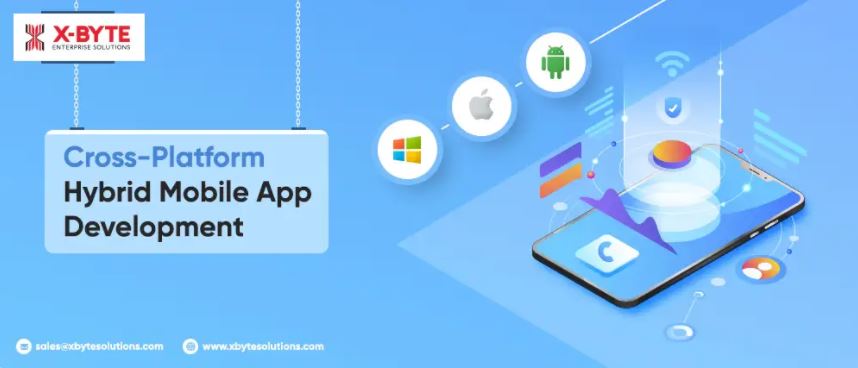
The mobile app development market is full of opportunities today. Some of the most plaguing concerns in the world can now be solved by mobile applications. We experienced this first-hand when we witnessed one of the devastating pandemics of the century and mobile apps of all kinds came to the rescue to keep us safe, sane and secured.
We had on-demand mobile apps to deliver essentials at our doorsteps. We had mhealth apps seamlessly taking care of our physical and mental health. We also had perpetual access to music and video streaming services to keep us entertained for a while amidst all the negativity that surrounded us. In short, mobile apps are inevitable.
With that said, the market is becoming extremely competitive as well. Brands and businesses are quick at identifying new opportunities and simultaneously turn threats into opportunities. This is making the market highly competitive with apps rolling out from multiple brands to resolve one real-world issue.
When the competition is stiff, businesses have to rely on the initial influx of users to experience their apps, get captivated by it, derive value out of it and then retain it for eternity. Time to market plays a crucial role in this phase as brands could lose out on users, profits and market share if they arrive late to the party.
That’s exactly where hybrid apps come into the picture. In this extensive guide, we will explore everything about cross-platform hybrid app development, its advantages, popular development frameworks and more and get a good grasp of the concept. This will ensure you have all the insights you need to venture into hybrid mobile app development for your business or an idea.
Let’s get started.
What is Cross Platform Mobile App Development?
For the uninitiated, mobile app development can be classified into three types:
- Native apps
- Web apps
- And hybrid apps
Native apps are those that are built for one specific platform such as Android or iOS. They have their own guidelines, development standards and practices that developers have to adhere to. Native apps offer seamless experiences to users and leverage the full potential of the devices they operate on.
Web apps, on the other hand, are those that can run from browsers and need no downloading whatsoever. They are universal and are not limited by factors like device size, screen size, operating system and more.
Lastly, the main topic, hybrid apps are the blend of both that combine the best standards and functionalities of native and web apps. For instance, they deliver the seamlessness and phenomenal experience of a native app and are universal and platform-independent like web apps.
Hybrid app development is all about coding an application just once and pushing it to all operating systems with minor tweaks.
Cross Platform Hybrid App Development Services: The Complete Anatomy
Now that we know what hybrid apps are, let’s take a further step in understanding hybrid mobile app development and get to know the different components of a hybrid app.
What Are the Benefits of Cross-Platform Hybrid App Development Frameworks?
Hybrid apps offer tons of advantages to owners. There’s a reason why brands are increasingly looking to develop hybrid apps and roll out cost-effective solutions to their target audiences and existing customers.
Let’s explore in detail what the advantages are.
Versatile
Hybrid apps are not limited by platform restrictions. It is a known fact that you cannot install Android apps on iOS devices and vice versa. However, what’s becoming a trend is that a lot of businesses are launching exclusive apps first before making them universally available for all devices.
For instance, Clubhouse got an iOS exclusive launch before it made its way into Android devices. For businesses that are aiming for a higher traction, hybrid apps are ideal as they allow you to reuse the same source code for all operating systems. Cross-Platform Hybrid app development is as versatile as it gets.
Swift SDC
SDC stands for software development cycle. With methodologies like DevOps and agile ruling the project management space today, hybrid app development ensures your apps are developed in time regardless of your time to market. Having the need to be coded just once, hybrid apps enable you to quickly roll out MVPs or even first iterations of your final product as well. They are also extremely stable and secure.
Ease Of Maintenance
One of the major concerns brand owners face is maintaining their apps in the long run. Native apps involve higher expenses and frequent roll outs of individual codes and patches for diverse operating systems.
However, that’s totally not the case with hybrid app development as app management and maintenance is hassle free. Hybrid apps can be easily maintained with one single version of update or patch pushed to multiple OSs.
Less Expensive
Hybrid mobile app development not just lets you save time and effort but money as well. Brands that are awaiting funding but desperately need stats and numbers on downloads to get investments can rely on hybrid apps for low development costs. Hybrid apps are also ideal for enterprises who intend to test the water for diversification when entering a new market segment.
Network Independent
This is probably the biggest advantage of hybrid apps. They are available offline and let customers use the app like they would do when connected to the internet. This is because hybrid apps locally store data and make it available when there is no internet connection. This powers multiple functionalities of the app, assisting users who are on the go or are located in remote areas where there is weak internet connection.
High Performing
Advancements in cross-platform hybrid app development are gradually bridging the gap between native app experience and hybrid development frameworks. Customers today can no longer differentiate between both and tell for sure which version of the app they are using. Hybrid apps load fast, are super-smooth in their operations and hardly crash or lag. This is what every customer needs.
Real-World Examples Of Hybrid Apps
This could be a little surprising as some of the apps you’ve been using quite frequently could be on this list. Thanks to the functionalities and benefits they offer, hybrid apps are slowly becoming more predominant. That’s why market players intend to go ahead with them as well. To give you a quick idea, here are some examples of hybrid apps.
- Gmail - Initially developed on HTML, Google decided to fix some of its concerns and shortcomings and develop it on HTML5. What we use today is the most stable, hybrid version of the app that is giving us native-like experiences on a daily basis.
- Twitter - For those of you who were hesitant on the performance of hybrid apps for high-traffic websites, here’s the answer. Twitter deploys hybrid apps and nobody could tell if they were using a native or a hybrid app based on its performance. Hybrid apps are perfect for high-volume applications as well.
- Uber - The on-demand transportation app that is full of modules and processes working in tandem with each other to ensure our next ride is less than 5 minutes away. For all the functions it performs, Uber works on a hybrid framework, delivering exceptional performance.
Which Cross Platform Framwork Is Best For Mobile App Development?
Because cross-platform app development is in trend, several hybrid app development frameworks have popped over the years to allow developers to seamlessly build and roll out hybrid apps. Let’s look at some of the most popular frameworks.
Flutter App Development Framework
Owned by Google, Flutter was launched in the year 2017. Since then, it has grown immensely in the hybrid app development space, quickly becoming a fan favorite among the developer communities around the world. Flutter enables mobile, web and desktop app development and is popular for its range of widgets and UI-specific tools. The fact that it is open source adds to its popularity.
Ionic App Development Framework
Another open source cross-platform mobile app development framework, Ionic is one of the most widely used frameworks in the world. Deploying technologies like JavaScript and CSS, Ionic has preloaded UI components like sheets and forms and a host of tools and features to test and debug apps.
React Native App Development Framework
Developed and owned by Facebook, React Native is a framework that has the least learning curve. Ideal for beginners, this framework offers extensive support to 3rd party integrations. React Native is used by several tech mammoths for their apps.
Wrapping Up
This is an extensive guide on hybrid app development, right? We believe you have all the adequate knowledge and insights on what hybrid mobile app development is. The only thing left to do is approach a solid app development company like ours to get your hybrid app developed.
We work with the best minds in the industry and have an incredible portfolio of applications we’ve developed over the years. We recommend you get in touch with us to discuss your cross platform app development services ideas and find out the most practical ways to develop your business app for profits.
| Read original blog here : Cross-platform App Development
0 likes · 0 comments
Bhavesh Parekh
2 years ago
Post from Bhavesh Parekh
How To Understand The Mobile App Development Lifecycle In Simple Steps?
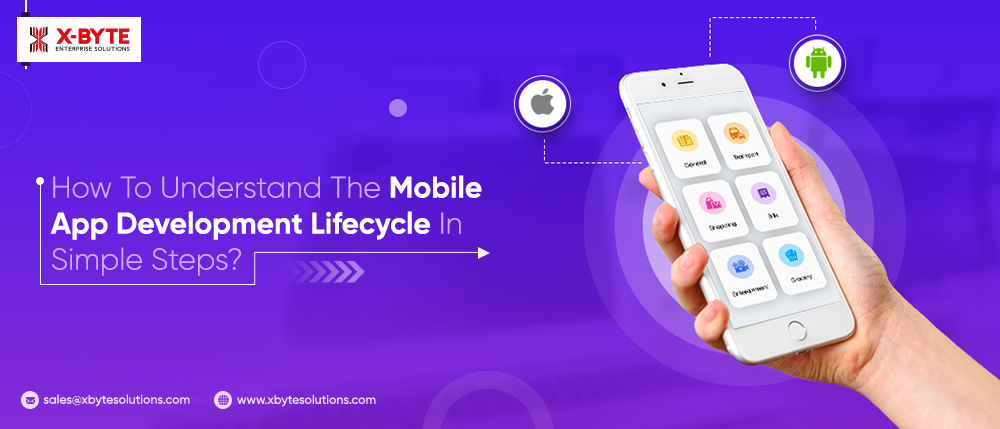
What Is The Lifecycle Of A Mobile Application Development?
The design of a mobile app usually consists of two parts: the front end and the back end, which includes APIs and a database server. Front-end development for mobile apps. This is frequently thought of as the development of a mobile app.
Inception
The growing penetration of smartphones has led to a huge growth in the number of apps available in app stores. Because of the ease of using a mobile device, organizations and brands have been pushed to employ apps to reach and engage their intended audience.
Knowing how to proceed with the mobile app development life cycle (MADLC) will assist you to get it right the first time if you're also intending to design an app for your target audience. It will also assist you in determining what you require and what to expect during the design phase. The MADLC resembles the software development life cycle in many ways.
What Are The Phases of Mobile Application Development LifeCycle Process?
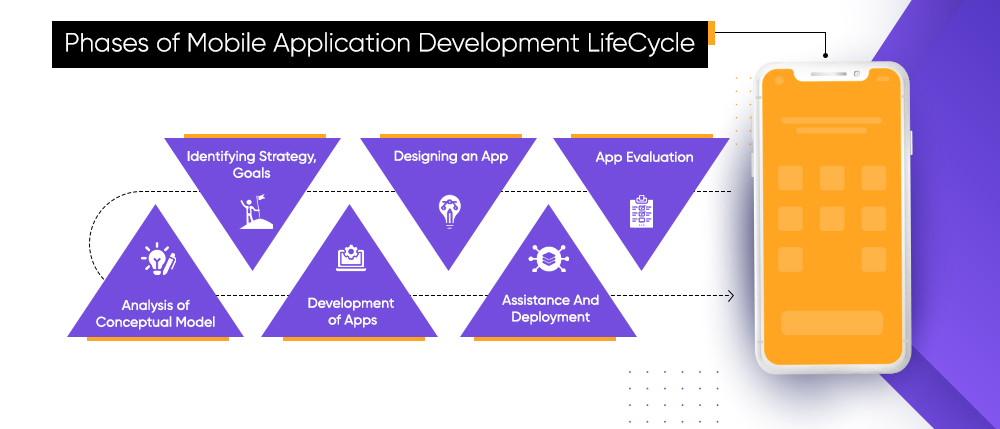
Let's discuss each of the steps in the mobile app development lifecycle in detail.
1. Identifying Strategy, Goals, Plans and Conducting Market Exploration
You must have a clear plan with well-defined goals before beginning the development. The first stage is to collect data that will assist you to determine the type and function of your application.
What are your goals for using the app? What industry trends are influencing your decision to create an app for your brand or business? What impact will the app have on your target audience's engagement? What market category are you aiming for? Answer these questions honestly and objectively, as they will form the cornerstone of your app development process, whether you're outsourcing or doing it in-house.
During this stage, you will find out:
- Determine who is using the app.
- Examine the competition.
- Identify the app's objectives and aims.
- Choose a mobile display place for the application.
Mobile apps usually charge between $150,000 and $200,000 and take four to six months to design. Your plan aids in concentrating your ideas on a clear image of your app concept. With this in mind, you're ready to move on to the next stage of the mobile app development process.
2. Analysis of Conceptual Model
Throughout this step, you must create a distinctive app concept that will stimulate your target audience's interest. Checking out some of the top apps in a certain app store is a smart habit to get into. Examine how they work and what they're doing properly. You must also be certain of the following:
- How will you stay one step ahead of the competition? It would be ideal if you could provide something exceptional to your intended audience that none of your competitors can. Concentrate on the distinctive features of your apps.
- Is your notion in line with your company's goals? Your main goal should be to take your company to the next level. You should be able to make a clear connection between your app concept and your company.
- Is the app concept concentrated on the customer? Make sure your app concept meets your clients' demands.
Furthermore, your proposal should be rational and simple to implement. Evaluating the talents required for your app development endeavor is a part of the decision-making step. The mobile platforms iOS and Android, for example, have separate development technological frameworks. If you want to create a mobile app that works across iOS and Android, your mobile development team should comprise both iOS and Android programmers.
Did you opt for a name for your app? Like domain names, mobile app names must be distinctive inside each app store. Verify each app store to confirm that your app's name isn't still taken!
3. Designing An App
This is the point at which the creative process starts. Here you can create rough sketches and designs for your app's many displays and functionality. While doing this, you should have a keen eye for detail. The visual aspects of different app elements should be in sync and contribute to the overall customer experiences.
Compression Algorithms & Interface Design
The first phase in the smartphone app development process is to figure out what data your app will show users, what statistics it will gather, how users engage with the finished product, and how users will navigate the app.
Corporate smart phones include users with participating nodes and privileges, and it's critical to include these principles in the interface design of the app. Process models aid in the identification of every potential link a user has with the app, as well as the maintain infrastructure of the app.
Wireframes
Diagrams on paper are a common starting point for mobile app creators. Wireframes are a form of technology doodle. Wireframes, also involving the use of low models, are conceptual layouts that give graphic display to your app's technical specifications.
Wireframes are more concerned with attractiveness and user experience than with color palettes and patterns. Wireframes are a simple and affordable way to build app interfaces and evolve through them during the design evaluation process. You should consider gadget conceptual quality when designing wireframes.
Design Manual
Design manuals are "dynamic papers" that document an app's technical specifications, from your firm's branding guidelines to navigation symbols.
The following are some examples of style guides:
- What script genre will the text in the app be?
- What color scheme will you use?
- How will the app design represent your company's brand?
The design strategy of an app is aided by style guides. The efficiency of your mobile app developers is improved by establishing a style guide early in the development process. At the same time, sticking to a style guide will help your app maintain a consistent appearance.
Mockups
High-fidelity models, often known as mockups, are definitive drawings of your app's interface style. Your reference manual is applied to the app wireframes to build mockups. Expect more changes to your app's interface design, performance, and appearance as the design progresses. The far more powerful feature for generating substantial mockups is Adobe Photoshop.
Prototype
Mockups use dynamic designs to show the performance of your smartphone device; with technologies including Invision and Figma, these can be turned into button prototypes. Prototypes are extremely beneficial for modelling the user interface and app operations that will be present in the final product. Although prototype creation might be time-consuming, it has been well enough to justify the effort because it allows you to verify the features and function of the app at a preliminary phase. Prototypes are commonly used to assess changes to the app's intended content.
4. Development of Apps
The formative evaluation is mostly concerned with creating a solid backend that connects the app's numerous components to your servers, databases, storage solutions, and APIs. There are three steps to the standard development process:
- Alpha Stage: The app has all of the main functionality, but testing and the inclusion of auxiliary features have not yet been completed.
- Beta Stage: Minor issues have been fixed and light testing has been completed. In addition, some new features have been introduced to supplement the main ones. Advanced testing can now be carried out on a tiny sample of the real intended audience.
- The app has reached the Release Test stage and is ready to be released.
With updated editions of mobile platforms, mobile technology progresses at a much rapid pace. Furthermore, every few months, new mobile gadgets are released. Agility is critical for developing mobile apps within timeframes and budgets, especially since platforms and devices change frequently. Use an agile development method if speed-to-market is a top objective. This method allows for frequent software releases with fully functional applications. Setting development milestones as part of an agile development plan allows you to iterate on your mobile app.
To get it right the first time, the client must be actively involved throughout the development process. Additionally, to avoid any issues during release, developers should keep the standards for designing native apps in the backdrop of their heads.
5. App Evaluation
Now that your app is completely functional, it's time to put it through a thorough testing procedure by exposing it to a variety of real-world circumstances. The goal is to find any flaws that were missed during the initial stages.
Accessibility, the mechanism to track performance, the interface, reduced energy testing, service, accessibility, and security are all important aspects to test.
Ux Evaluation
The final design must meet the user experience defined by the app design team, which is a vital phase in mobile app testing. Your app's visuals, workflow, and interactivity are what will offer your end consumers their initial impression of it. Make that your app's typefaces, style treatments, color palette, and padding between data, icon design, and navigation are all consistent. Making sure your software adheres to the original design principles will have a significant impact on user acquisition.
Assessment of Functionality
The functioning of your mobile app must be accurate for it to be successful. It's tough to forecast the behavior and evaluate the ideas of every end-user.
Your app's performance should be evaluated by as many users as feasible to cover as many possible testing scenarios as possible. When two separate users try the same component but get different results, you could be startled to find issues. Both users can complete out the identical form, but they may submit different data, which could lead to a fault being discovered.
Evaluate The Performance
For evaluating the performance of your app, you can utilize a variety of quantitative parameters.
- How successfully does your app respond to requests from users?
- How quickly do the app's displays load?
- Is your software generating memory leaks or draining the phone's battery?
- Is your software making good use of network bandwidth?
- Is your app using up more space than it should?
Even if your app satisfies fundamental performance standards, simulate the maximum number of concurrent users to test the app, API, and backend for the load. Even though usage surges, your app should be able to keep up with demand and operate well.
Screening For Security
For corporate mobile apps, security is paramount. A hack can be caused by any conceivable vulnerability. Many businesses pay independent firms to conduct extensive security testing on their software. To secure your software, your Testers and youthful offenders can take a few basic steps.
If your app requires users to log in, both the device and the backend should keep track of these instances. When a user's session has been idle for an extended period, the system should terminate it. If the app saves login credentials on the device to make it easier for them to re-login, you'll need to be sure you're utilizing a reliable provider.
Data entry forms in your mobile app should be thoroughly checked to guarantee that no sensitive information is lost.
Verification Of Platforms And Devices
In 12 months, new mobile devices with new hardware, firmware, and design hit the market. Every several months, mobile operating systems are updated.
LG, HTC, Samsung, and Motorola are among the mobile device makers that use the Android platform, but they modify it for their devices (since Android is open source). The gadgets are available in a variety of sizes and shapes.
Compare this to Apple, which has a far more strictly restricted system because they own both the hardware and the operating system. However, there are a variety of iPhone and iPad (Apple iOS) devices available.
Testing is critical to an app's long-term performance, and it takes up a significant portion of our comprehensive mobile app development process. A well-thought-out mobile testing plan is essential for producing a high-quality mobile app. The app's final improvements should be based on the insights gained through testing.
6. Assistance And Deployment
The app's deployment is the endpoint. Getting the word out to as many individuals as possible is the goal of this phase. • App store optimization to boost your app's exposure is one of the main focus areas in this phase.
- Use of efficient keywords in marketing blogs and social media postings for search engine optimization.
- Creating a dedicated landing page for your app on your website.
- Sponsored social media ads to reach a bigger audience.
Developers offer post-deployment assistance in case there are any issues or adjustments that need to be done. Their guidance is also useful when the app needs to be updated.
Inference
The development phase is the longest. As long as the app is usable, app development is a never-ending process. You acquire a deeper insight into what you can do to improve the app's functionality and what to include or avoid in future updates as the app gains more users and reviews. Users' tastes change over time, and it's your job as a developer to make sure your software keeps up.
| Read Full Blog Here : Mobile App Development Lifecycle
0 likes · 0 comments
Bhavesh Parekh
2 years ago
Post from Bhavesh Parekh
Step By Step Guide To On Demand Travel Booking Application Development
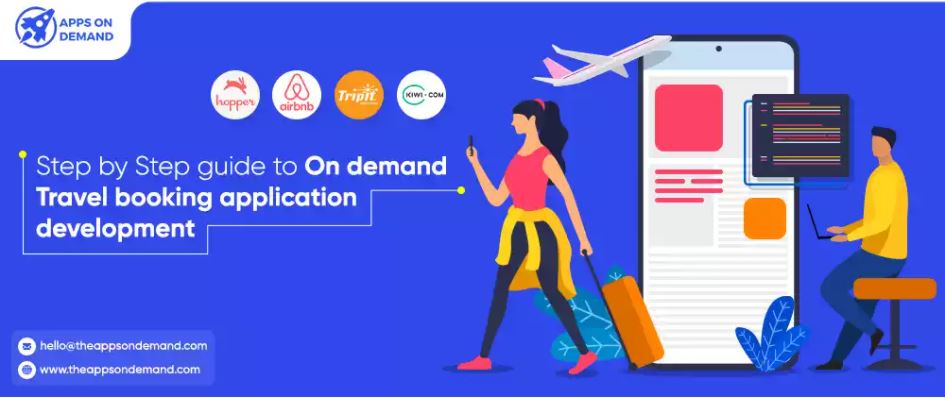
Technologies have made traveling accessible and affordable for people across the world. Well, the tourism market is one of the most promising sectors with a large audience.
Those having travel businesses are looking forward to an on demand travel booking app to boost the number of customers and cement their position in their industry.
Why Travel On Demand Travel Booking Application Development Brings Multiple Opportunities For The Travel Industry?
A lot of travelers use apps for ticket booking, hotel booking, renting out apartments, or small trips. The apps send out notifications to their mobile devices, help them track routes using software, save loyalty program cards in apps, etc.
The statistics given below confirm that on demand Travel booking application development is a worthwhile investment domain
- 64% of respondents are happy to take a virtual tour of the accommodation facility before booking the same.
- 70% of instant trips and bookings are done via smart devices.
- Online sales of travel services witnessed a hike of 10% in 2018
- Travel apps are commonly searched applications in the top 10 most searched categories on the App Store.
Let us have a look at Travel booking application development Guide that helps walk you through simple steps
Select App Type
Select The Type Of On Demand Travel Booking App You Want From
- Accommodation booking
- Travel guides apps
- Transport Apps
- Booking apps
Perform research on competitor’s actions
Try to browse through other travel apps related to your niche, their benefits, drawbacks, etc. Also, try to consider pre-built travel app APIs. Make sure you check out the travel apps of your competitors and how they operate.
Choose travel app MVP features
Try to list out the features for travel app MVP like
- Social sharing
- User account
- Location-based search and filters
- Booking
- In-app payment
Search Expert Travel App Developers
Make sure you hire an experienced and expert travel app development company having vast experience in mobile app development especially travel apps
Search To Explore The Latest App Trends
Try to determine the idea of the travel application based on the latest trends. Identify the project milestones, scope and look out for the perfect technical solutions.
Start Travel App Development Process
Now, start with the development process of the app. Interact with the development team working on the design and development process of your app.
Ten Vital Features To Be Included In Your Travel Application
A travel application comes with plenty of features. Well, the list differs based on the product type chosen by you. Here are some most important features of a travel app.
3rd- party data collection
If you wish to display data on your on demand Travel booking app offered by 3rd party services to all your users, you need to include multiple integrations with help of API. It can be done by activating sections presenting access to flight timings, car renting information, airfares, and other data.
Search function & filters
In case your travel app comprises large volumes of content, you need to embed a built-in search feature. Also, you can establish different filters for more customized results. It will help users from getting confused in the pool of huge data and help them to search for what they need in no time.
User area
When you build a travel app, it is meant for personal use. Thus, it is important to integrate a personal user account into the app. Here, users can save their personal information to save time while re-booking, payment transfers, and browsing through the booking or travel history.
Booking feature
Through your app, the users should be able to book the hotel of their choice, a car, air tickets, etc directly according to their flexible timings. The app should help the users to pull out their personal information straight from their user profile.
In case you collaborate with other service providers, you can help users avail themselves of exclusive loyalty program, encourage them to your services.
Geo-location and Navigation
One of the important features that should be taken care of during on demand Travel booking application development is navigation & maps. This feature is integrated with the help of geo-location technology.
The navigation system can help planning their journey or other tasks. For instance, the map helps show up a different point of attraction close to the user or hotels in a particular city.
Itinerary planner
Help your users view the complete tour itinerary right from day 1 to the end of the tour at one glance. It will help the user get all the details under one roof without using multiple apps. This feature is flexible to use and helps potential users to use just one product.
User feedback
People always wish to share their feedback and opinions. User feedback features help boost conversions. It also helps the users to access your app often and they don’t need to use other websites and can rate their experience with your app.
Weather forecast
Certainly, weather forecasting is one of the essential features to be added to your on demand travel booking app to help users to plan their hiking, etc looking at weather conditions.
Personalized suggestions
The feature sends out personal recommendations to the users based on their web view, activities, trips, etc. It will help you retain customers and loyalty.
Conclusion
You can integrate all the above features during on demand Travel booking application development to help your travel business get a good customer base and generate revenue. With Travel booking application development guide you can learn what needs to be included in your app and what not and plan the development process accordingly.
We at Apps on demand help you build scalable and feature-packed on demand travel booking apps that help you boost user experience and generate revenues. Our on demand travel booking application development services have customized solutions to meet your individual mobile app development needs.
| Read Original Blog Here : on demand travel app development
0 likes · 0 comments
Bhavesh Parekh
2 years ago
Post from Bhavesh Parekh
How Does The Popular Food Delivery App DoorDash Operate?
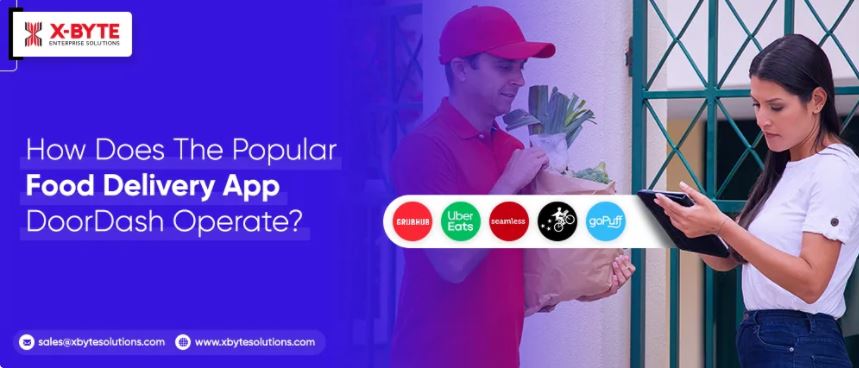
With food delivery apps like DoorDash, it is easy to explore a range of cuisines, restaurants, and menus at competitive pricing. Certainly, Doordash is one of the giants in food delivery creating buzz around these days.
According to reports presented by Forbes, on-demand food delivery services have seen a rise by almost 20% every year. It will generate revenue of around $365 billion by 2030.
Well, the reports also say that the food delivery business is facing tough competition in the market. So, if anyone is willing to enter the food delivery business and hire food delivery app development services, they should understand and learn from the achievements of DoorDash and how it managed to grab the first position in the food delivery niche in just 7 years after its foundation.
If you are among those who are curious to know how the DoorDash food delivery app operates read through the blog to know more.
About Doordash
Doordash operates in 4000 plus cities and has 340,000 plus stores all over the US & Canada. It was founded in the year 2013 and has generated $2.5 billion since its foundation.
How Does DoorDash Operate?
Just like other logistic-based on-demand start-up structures, DoorDash also started similarly. Let us look at how this food delivery service provider operates
Select Order

DoorDash Food Delivery App helps customers to navigate through menus and restaurants using filters like nearby restaurants and restaurants offering discounts etc.
Customers can create their order just by selecting the particular food items of their choice from their favorite restaurant.
Payment System
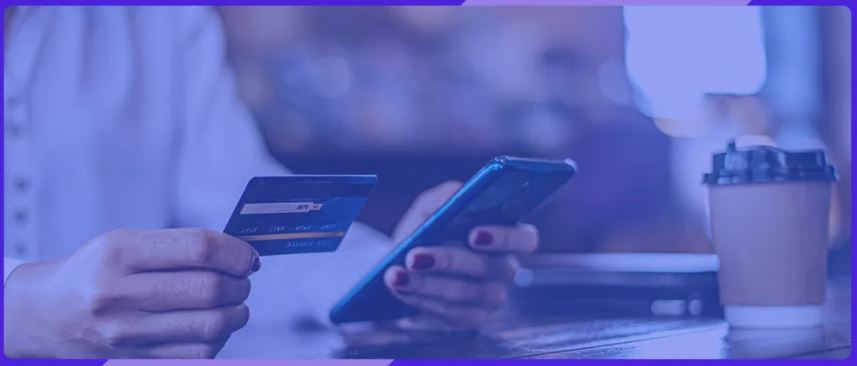
After placing the orders, users can move to the payment gateway and select from different payment methods to make the payment.
Track Order
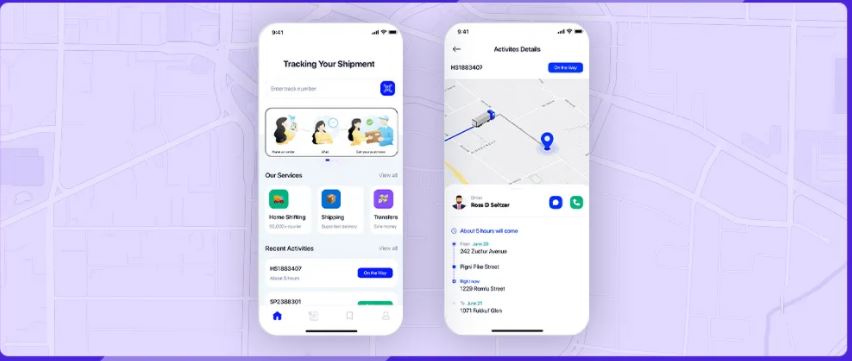
Once the order is placed DoorDash sends it to the restaurant chosen by the user. The order is then received by the restaurant and the user can track the order status like packed, prepared, on its way, etc.
The delivery agent will pick the order and it will be delivered to the customer’s doorstep. The Food Delivery App like DoorDash helps users to track the real-time location of the delivery person.
Delivery

Once the delivery agent delivers the food to the customer, the customers can give them a tip if they want to. The tip is given to the respective delivery agent only.
The Business Model Of DoorDash
The business model of a Food Delivery App like DoorDash is amazing. They follow a business model with Y-structure. The model focuses on 3 different areas of the food delivery chain.
It works in collaboration with all 3 areas - customers, restaurants, and delivery agents. The food delivery app gives the liberty to their customers to pick from several options, helps its restaurants to access a huge customer base which otherwise becomes difficult for them to reach the customers.
DoorDash also manages both parties by helping them track the delivery person and get real-time details of their location.
DoorDash manages the operation and interconnection of these 3 elements giving excellent experience to its stakeholders.
The customer gets all the benefits of easy ordering from anywhere and anytime, the food delivery app also offers them competitive pricing and an active delivery tracker.
The restaurants collaborating with DoorDash do not have to worry about food getting delivered to their customers. Hence, they can give more time to their core business like improving in taste and quality of food, adding new menus, etc
Also, collaborating with 3rd party delivery service providers is flexible for restaurants. They can save costs on hiring delivery agents. It helps small setups get the boost the most.
The delivery agents or the drivers are called Dashers and DoorDash gets a flat fee against each delivery they process weekly. It offers employment opportunities to many people who are the only bread earners in the family or solely dependent on this job.
How Does Doordash Generate Revenues?

Doordash generates revenue from
- Commission on orders
- Delivery fee
- Advertising
Conclusion
DoorDash strives to offer newer experiences to its customers. One of the features ‘Delight Score’ is all about that. The feature helps customers rate the restaurants on a scale of 1 to 10 and other criteria like food quality, hygiene, etc
DoorDash's main objective is to help its customers get quality food delivered to their doorstep. They work to improve user experience and hence they have a huge base of customers associated with their food delivery app.
Why Choose X-Byte Enterprise Solution For Food Delivery App Development?
When it comes to building a Food Delivery App like DoorDash, many firms that deal in food distribution are worried about the costs associated with food delivery app development services.
X-Byte solutions will take away all your worries and help you build an amazing food delivery app. With our dedicated team of developers and their vast experience in app development, you can get a food delivery app that matches your business needs.
Associate with X-Byte solutions and you can get fusion of all the advanced features to beat the competition.
We also give shape to your ideas, so if you have a vision as to how your food delivery app should be, reach out to us to help us understand your requirements.
| Read Original Blog Here : Food Delivery App Development
0 likes · 0 comments
Do you want to manage your own group?
